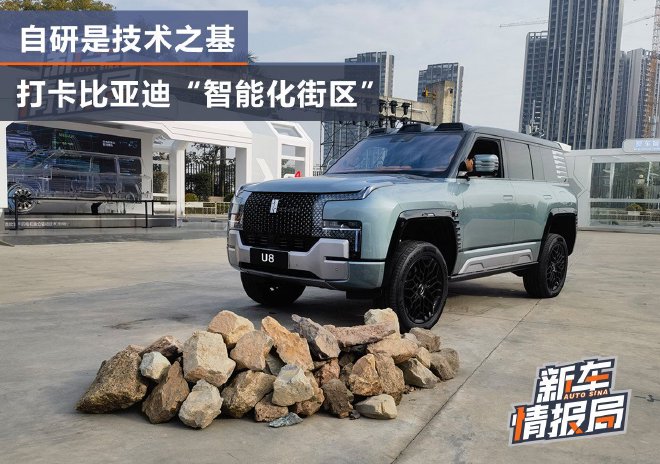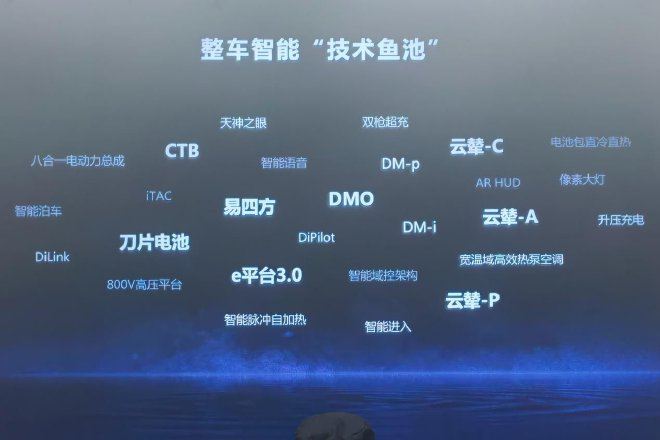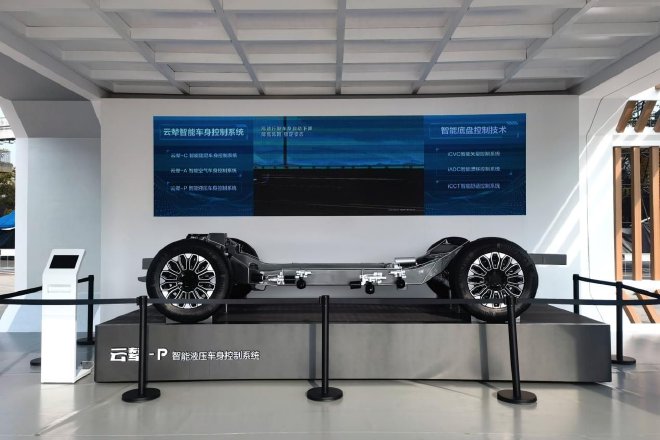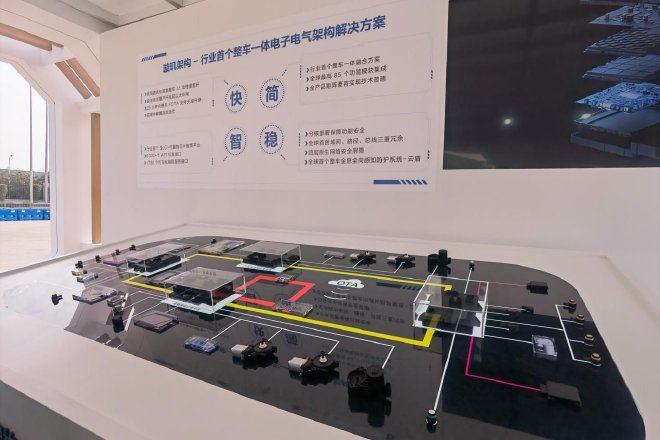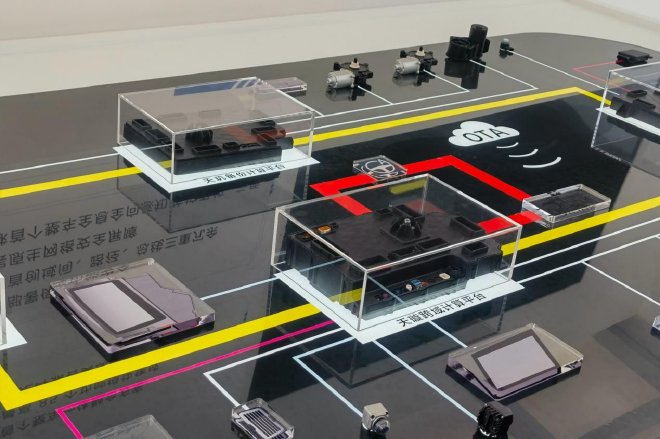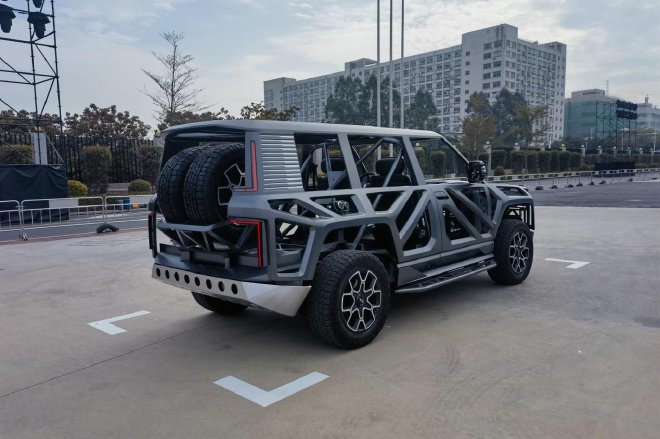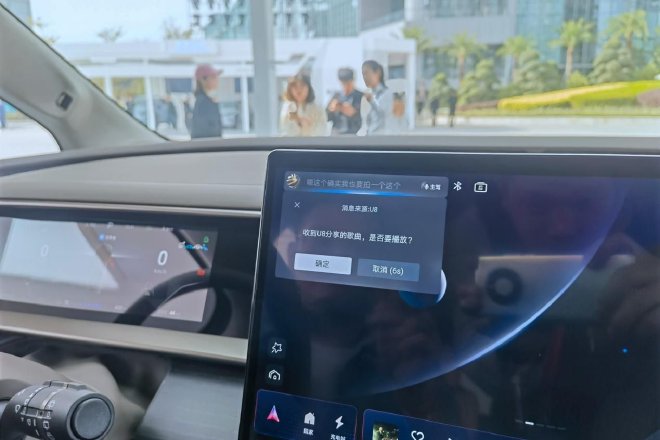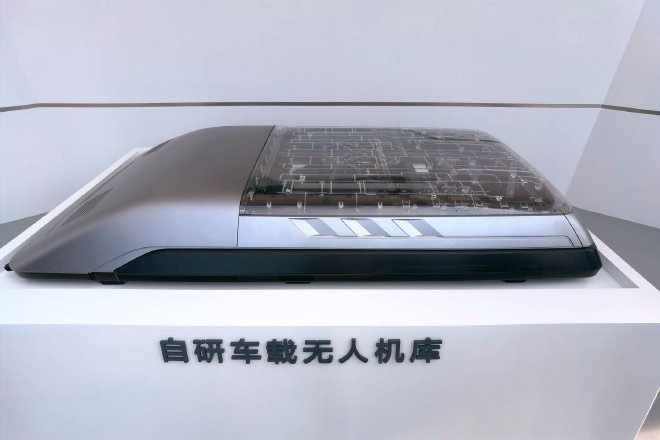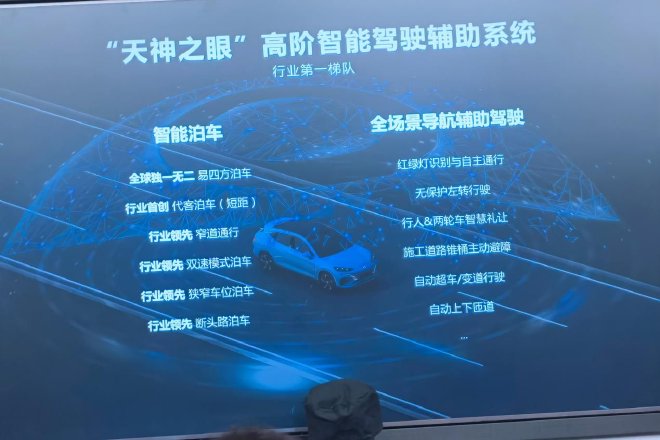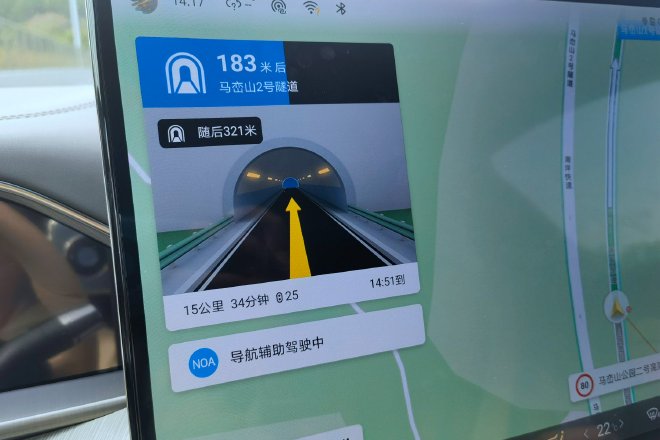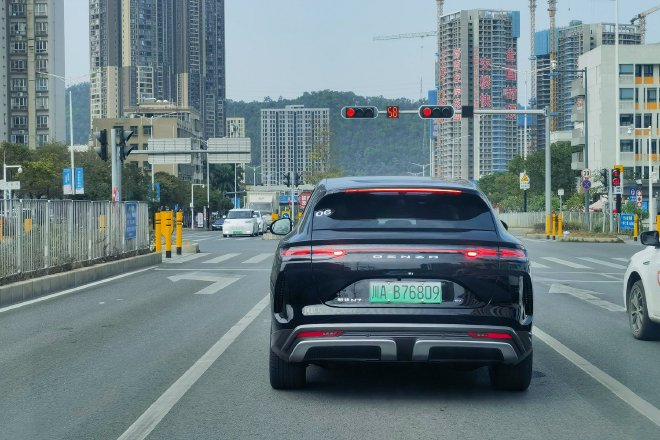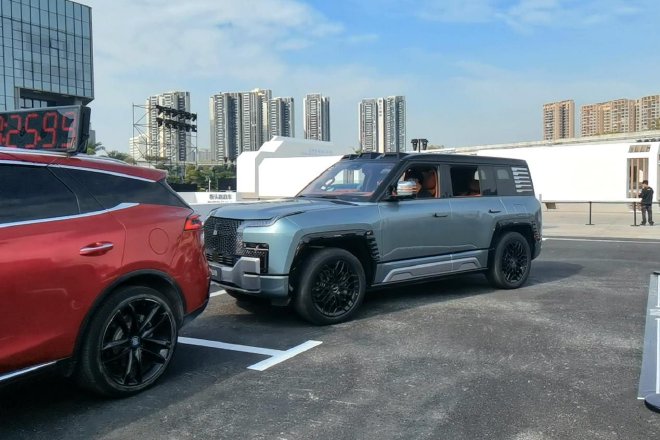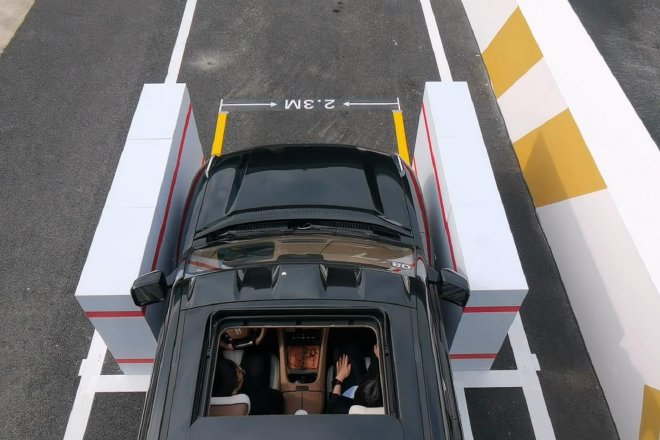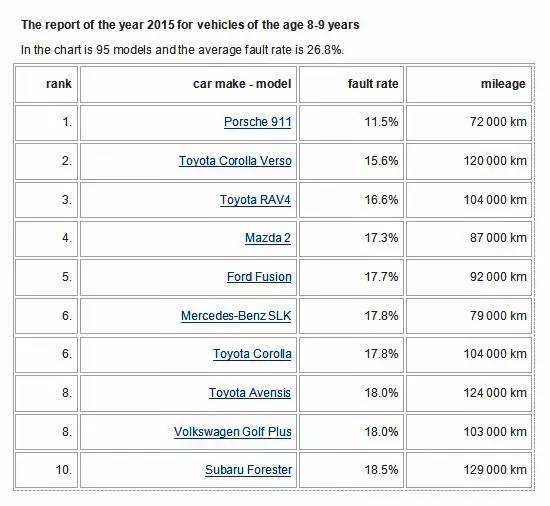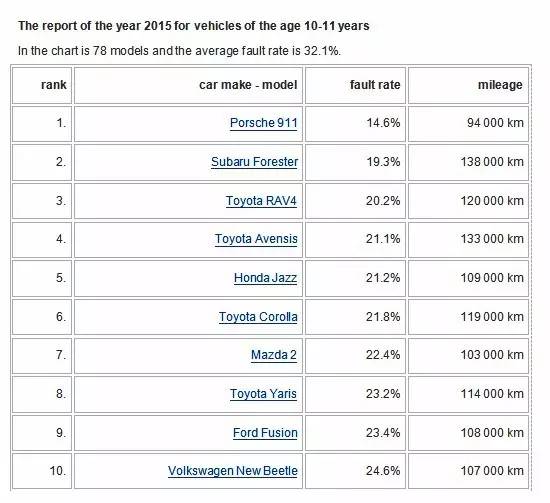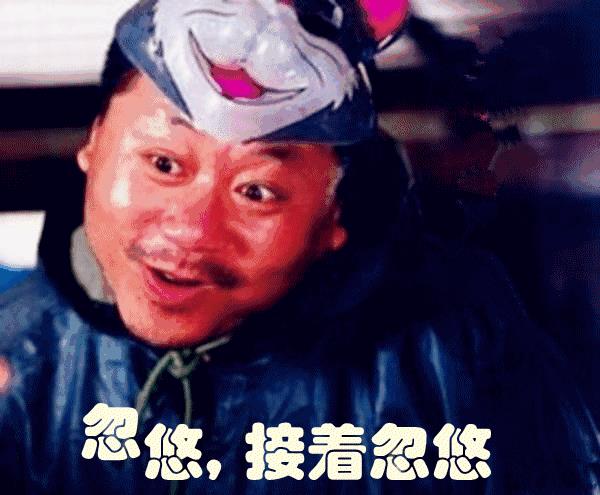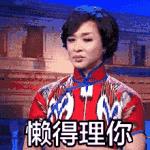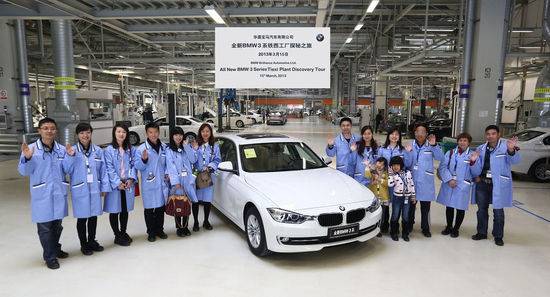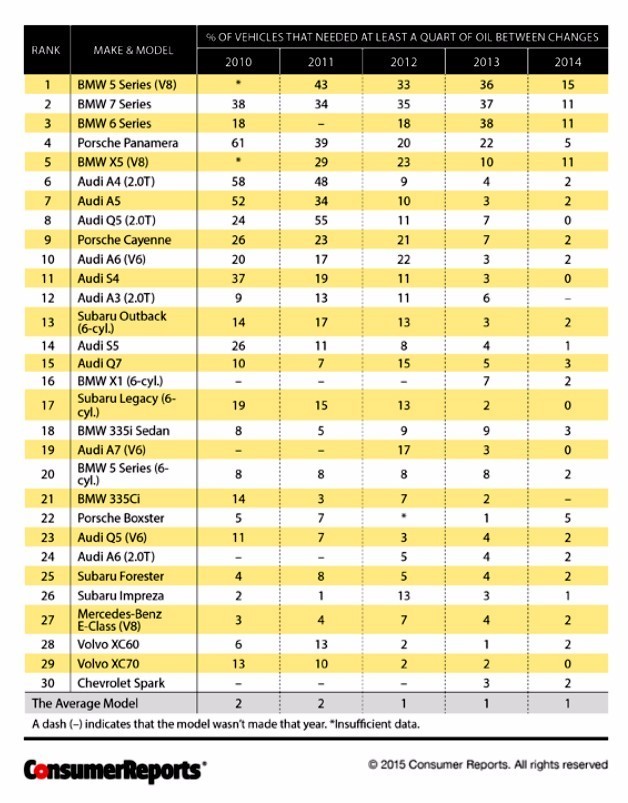|
Hunan Provincial Bureau of Statistics
March 10, 2009
|
| |
In 2008, under the strong leadership of the provincial party committee and the provincial government, the province thoroughly implemented the major decision-making arrangements of Scientific Outlook on Development and the central government, persisted in promoting the strategy of "one country, three bases", focused on innovative development ideas, seized development opportunities, and maintained steady and rapid economic growth, winning "economic growth, structural optimization, improvement of people’s livelihood and social harmony".
I. Synthesis
The economic aggregate has leapt to a new level. In 2008, the GDP of the whole province exceeded one trillion yuan, reaching 1,115.664 billion yuan, an increase of 12.8% over the previous year. Among them, the added value of the primary industry was 200.74 billion yuan, an increase of 5.3%; The added value of the secondary industry was 493.308 billion yuan, an increase of 14.9%; The added value of the tertiary industry was 421.616 billion yuan, an increase of 13.3%. According to the resident population, the per capita GDP was 17,521 yuan, an increase of 12.5%. The total fiscal revenue was 130.855 billion yuan, up by 16.5%. Among them, the local fiscal revenue was 71.702 billion yuan, an increase of 18.2%.
The leading role of new industrialization has been enhanced. The proportion of the three industries in the province is 18.0: 44.2: 37.8, of which the proportion of the first and second industries is 0.3 and 1.6 percentage points higher than that of the previous year respectively. The total industrial added value accounts for 38.4% of the regional GDP and contributes 47.1% to the province’s economic growth. The industrial added value of provincial parks and above was 118.014 billion yuan, an increase of 22.0%; It accounted for 33.0% of the added value of industrial enterprises above designated size, an increase of 1.5 percentage points over the previous year. The added value of high-tech industries accounts for 9.8% of the regional GDP. Save energy and reduce consumption to achieve the annual target. The growth rate of high energy-consuming industries declined, and the six high energy-consuming industries, such as electricity and nonferrous metals, realized an added value of 142.646 billion yuan, an increase of 10.8%, and the growth rate dropped by 11 percentage points over the previous year; The proportion of industrial added value above designated size was 39.9%, down 1.8 percentage points from the previous year. The supporting role of producer services increased, achieving an added value of 162.549 billion yuan, an increase of 14.5%, which boosted the province’s economic growth by 2 percentage points and contributed 17.8% to economic growth.
The contribution of the non-public sector of the economy has increased. The added value of the province’s non-public economy reached 625.227 billion yuan, accounting for 56.0% of the regional GDP, up 1.5 percentage points over the previous year. The added value of non-public-owned industries above designated size reached 196.544 billion yuan, an increase of 25.9%, accounting for 55.0% of the added value of industries above designated size. The investment in non-state-owned economy was 366.429 billion yuan, an increase of 33.2%; The proportion of fixed assets investment in the whole society reached 64.9%, an increase of 0.8 percentage points over the previous year. The total import and export volume of private enterprises was US$ 5.241 billion, US$ 110 million more than that of state-owned enterprises; It increased by 45.5%, 23.2 percentage points higher than the growth rate of state-owned enterprises. The total import and export volume and growth rate of private enterprises exceeded that of state-owned enterprises for the first time.
The regional economy has developed in an all-round way. The GDP of Changsha, Zhuzhou and Xiangtan was 456.531 billion yuan, accounting for 40.9% of the total GDP of the whole province, up by 3.2 percentage points over the previous year; It increased by 14.5%, and the growth rate was 1.7 percentage points higher than the provincial average. The investment in fixed assets above cities and towns and the total retail sales of social consumer goods in Changsha, Zhuzhou and Xiangtan accounted for 46.4% and 42.8% of the province respectively. The GDP of the "3+5" region was 876.051 billion yuan, an increase of 13.7%, and the growth rate was 0.9 percentage points higher than the provincial average. The GDP of western Hunan was 120.372 billion yuan, an increase of 11.6%. The GDP of southern Hunan was 232.683 billion yuan, an increase of 10.7%. The urbanization rate of the whole province was 42.15%, 1.7 percentage points higher than the previous year. Among them, the urbanization rate in Changsha, Zhuzhou and Xiangtan is 55.04%, which is 12.89 percentage points higher than the provincial average.
Social and people’s livelihood has been further improved. The province has comprehensively completed the objectives and tasks for 29 practical things run by the people. The work of employment and re-employment was intensified, with 760,600 new urban jobs, 4,910 urban zero-employment families being dynamically cleared, and 155,300 rural poor families being assisted to transfer jobs. Social undertakings have been further strengthened. Students’ tuition and miscellaneous fees in urban compulsory education are all exempted. The new rural cooperative medical system covers all counties and cities in the province, with 45,014,600 participants, with an average participation rate of 89.0%; The construction of 409 township hospitals was completed, and 272 township nursing homes were newly rebuilt and expanded; The pilot project of basic medical insurance for urban residents was launched in an all-round way, and the number of participants in the province was 6,396,400. 26,100 rural housing construction projects were all completed; 4,407,000 square meters of urban low-rent housing and 2,209,200 square meters of affordable housing were newly built (raised). Cancel 64 administrative charge and industrial and commercial "two fees" and cancel 215 administrative examination and approval items; Actively promote the pilot project approval agency system for investment projects, accelerate the construction of e-government, and further optimize the government environment. Comprehensive management of public security has been strengthened, the overall social situation has been stable, and the people have lived and worked in peace and contentment.
The main problems in the province’s economic and social development are as follows: the adverse effects of the international financial crisis spread from the coast to the mainland, and the pressure of economic development increased; The mechanism of agricultural disaster prevention and avoidance is still not perfect, and it is difficult for farmers to increase their income continuously; The employment situation in urban and rural areas is more severe.
Second, agriculture
Agricultural production has developed in an all-round way. The added value of agriculture, forestry, animal husbandry and fishery in the province was 200.74 billion yuan, up by 5.3% over the previous year. Among them, the added value of agriculture was 103.832 billion yuan, an increase of 2.0%; The added value of forestry was 12.867 billion yuan, an increase of 5.8%; The added value of animal husbandry was 67.832 billion yuan, an increase of 10.5%; The added value of fishery was 11.285 billion yuan, up by 6.8%. The total grain output reached a record high of 29,693,500 tons, an increase of 2.0%.
The pace of agricultural industrialization has accelerated. 220 national and provincial leading enterprises completed sales revenue of 83 billion yuan, an increase of 22.1%; The profit was 3.5 billion yuan, an increase of 14.8%. 50 new agricultural standardization demonstration zones were built.
Agricultural production capacity has been enhanced. The province’s rural fixed assets investment was 65.435 billion yuan, an increase of 20.0%. The fiscal expenditure on agriculture, forestry and water affairs was 19.74 billion yuan, an increase of 42.0%. Soil erosion control covers an area of 278.9 square kilometers. The effective irrigation area of new farmland is 5.68 thousand hectares, and the water-saving irrigation area is 8.06 thousand hectares. Rural electricity consumption was 8.146 billion kWh, up 6.7%. At the end of the year, the total power of agricultural machinery was 40.211 million kilowatts, an increase of 9.1%.
New achievements have been made in the construction of new countryside. The province has newly built 4047 kilometers of highways from county to township, and 23977 kilometers of cement (asphalt) roads from township to village. 158,700 new rural biogas digesters have been built, which has promoted the development of ecological agriculture. 5028 rural water supply projects were built, which solved the drinking water difficulties and unsafe drinking water problems of 1,691,700 people. Solved the problem of 1.1514 million people watching TV in rural TV blind areas. 1,000 new telephone villages have been added; 500 new rural comprehensive information service demonstration sites will be built, and 3,000 administrative villages will realize Internet broadband access. Completed the construction of 3316 village-level organization activity places. There are 12.08 million migrant workers in rural areas (including towns and villages) in the province, an increase of 10.0%; The total income of foreign workers was 95 billion yuan, an increase of 5.7%.
III. Industry and Construction Industry
The industrial economy maintained rapid growth. The total industrial added value of the province was 428.016 billion yuan, an increase of 16.0% over the previous year. Among them, the added value of industrial enterprises above designated size was 357.085 billion yuan, an increase of 18.4%. Among the industries above designated size, the added value of light industry was 114.454 billion yuan, an increase of 21.5%; The added value of heavy industry was 242.631 billion yuan, up by 17.0%. The advantageous industries grew steadily, achieving an added value of 273.044 billion yuan, an increase of 19.0%, driving the added value of industries above designated size in the province to increase by 14.4 percentage points. Among them, the equipment manufacturing industry grew by 31.1%, the biomedical industry by 32.4%, the electronic information industry by 26.8% and the food processing industry by 23.3%. High-processing industries continued to develop rapidly, with an increase of 28.9%, and the growth rate was 10.5 percentage points higher than the provincial average. The output value of new industrial products above designated size in the province was 121.26 billion yuan, an increase of 44.5%. The sales rate of industrial enterprises above designated size reached 98.75%.
Table 1: Main categories of added value of industrial enterprises above designated size in Hunan Province in 2008
Unit: 100 million yuan
|
point to mark
|
Absolute number
|
Increase or decrease over the previous year (%)
|
|
Added value of industrial enterprises above designated size
Among them: state-owned and state-controlled enterprises.
Among them: joint-stock enterprises
Foreign investors and enterprises with investment from Hong Kong, Macao and Taiwan
Among them: light industry
heavy industry
Among them: non-public enterprises
|
3570.85
1399.72
1995.23
247.80
1144.54
2426.31
1965.44
|
18.4
9.4
21.1
15.9
21.5
17.0
25.9
|
The output of main products has increased and decreased. The total primary energy production of industrial enterprises above designated size in the province was 40.3296 million tons of standard coal, an increase of 1.3%. The output of raw coal was 51.1949 million tons, an increase of 0.3%; The power generation was 82.956 billion kWh, an increase of 1.1%; 12,930,100 tons of steel, down 0.7%; Ten kinds of non-ferrous metals were 1,851,300 tons, an increase of 14.8%; 60.4388 million tons of cement, an increase of 7.0%; 145,000 cars, an increase of 7.6%; 4.0542 million tons of rice, an increase of 39.7%; Mixed feed was 6,529,300 tons, an increase of 26.9%; 164.802 billion cigarettes, an increase of 3.8%.
Table 2: Output of major industrial products above designated size in Hunan Province in 2008
|
product name
|
single place
|
Absolute number
|
Increase or decrease over the previous year (%)
|
|
crude salt
|
Ten thousand tons
|
150.78
|
3.9
|
|
Processed rice
|
Ten thousand tons
|
405.42
|
39.7
|
|
Refined edible vegetable oil
|
Ten thousand tons
|
102.07
|
30.7
|
|
Mix feed
|
Ten thousand tons
|
652.93
|
26.9
|
|
cigarette
|
Yizhi
|
1648.02
|
3.8
|
|
fireworks and crackers
|
hundred million yuan
|
188.39
|
50.2
|
|
Total primary energy production
|
Ten thousand tons of standard coal
|
4032.96
|
1.3
|
|
raw coal
|
Ten thousand tons
|
5119.49
|
0.3
|
|
Crude oil processing capacity
|
Ten thousand tons
|
607.84
|
-2.7
|
|
electric energy production
|
Billion kwh
|
829.56
|
1.1
|
|
iron casting
|
Ten thousand tons
|
1211.80
|
-2.7
|
|
crude steel
|
Ten thousand tons
|
1299.37
|
-2.4
|
|
steel products
|
Ten thousand tons
|
1293.01
|
-0.7
|
|
Ten kinds of nonferrous metals
|
Ten thousand tons
|
185.13
|
14.8
|
|
silver
|
ton
|
4397.56
|
7.8
|
|
cement
|
Ten thousand tons
|
6043.88
|
7.0
|
|
Machine-made paper and paperboard
|
Ten thousand tons
|
280.46
|
22.5
|
|
sheet glass
|
Ten thousand-weight box
|
1411.29
|
0.7
|
|
Sulfuric acid (discount)100%)
|
Ten thousand tons
|
204.36
|
-2.1
|
|
Sodium hydroxide (caustic soda)100%)
|
Ten thousand tons
|
43.59
|
-11.7
|
|
synthetic ammonia
|
Ten thousand tons
|
216.11
|
22.4
|
|
Agricultural chemical fertilizer (pure)
|
Ten thousand tons
|
291.60
|
1.9
|
|
automobile
|
Ten thousand vehicles
|
14.50
|
7.6
|
|
In which: cars
|
Ten thousand vehicles
|
3.77
|
151.0
|
|
Lifting equipment
|
Ten thousand tons
|
46.36
|
35.4
|
|
Concrete machinery
|
platform
|
10411
|
26.8
|
|
generating equipment
|
Ten thousand kilowatts
|
14.30
|
-22.3
|
|
transformer
|
KVA
|
6389.10
|
32.0
|
|
Ac motor
|
Ten thousand kilowatts
|
1383.98
|
6.0
|
|
color kinescope
|
Ten thousand
|
469.83
|
-30.7
|
|
Automatic instruments and systems
|
Ten thousand units (sets)
|
162.08
|
20.0
|
Most industrial sectors remain profitable. Among the 38 industrial categories in the province, there are 26 industries with increased profits, which is the same as that of the previous year. The main business income of industrial enterprises above designated size was 1,071.466 billion yuan, an increase of 34.8%; Profits and taxes reached 107.174 billion yuan, an increase of 4.0%; After the breakeven, the profit was 39.493 billion yuan, down 14.0% year-on-year, but after excluding the power and petrochemical industries, the profit was 45.549 billion yuan, up 6.7%.
Table 3: Benefit of Industrial Enterprises above designated size in Hunan Province in 2008
|
point to mark
|
Absolute number
(billion yuan)
|
Increase or decrease over the previous year
(%)
|
|
main business income
|
10714.66
|
34.8
|
|
Total profit and tax
|
1071.74
|
4.0
|
|
the total profit
|
394.93
|
-14.0
|
|
Among them: coal mining and washing industry
|
22.34
|
67.5
|
|
Agricultural and sideline food processing industry
|
18.26
|
27.9
|
|
Tobacco products industry
|
81.16
|
12.5
|
|
Petroleum processing, coking and nuclear fuel processing industries
|
-29.27
|
-
|
|
Chemical raw materials and chemical products manufacturing industry
|
30.47
|
13.5
|
|
Pharmaceutical manufacturing industry
|
14.48
|
17.3
|
|
Non-metallic mineral products industry
|
26.37
|
30.6
|
|
Ferrous metal smelting and rolling processing industry
|
30.53
|
-27.4
|
|
Non-ferrous metal smelting and rolling processing industry
|
25.64
|
-one point six
|
|
General equipment manufacturing industry
|
18.92
|
21.2
|
|
Special equipment manufacturing industry
|
50.86
|
-25.7
|
|
Transportation equipment manufacturing industry
|
21.63
|
15.6
|
|
Electrical machinery and equipment manufacturing industry
|
17.26
|
107.2
|
|
Production and supply of electric power and heat
|
-31.29
|
-
|
New steps have been taken in the development of the construction industry. The total output value of the province’s construction industry exceeded the 200 billion mark, reaching 228.7 billion yuan, an increase of 25.0%; The added value of the construction industry was 65.292 billion yuan, accounting for 5.9% of the province’s GDP. General contracting and professional contracting construction enterprises with qualification grade realized a profit of 6.11 billion yuan, an increase of 12.0%. The building construction area was 212,027,400 square meters, an increase of 12.8%; The completed building area was 83,092,100 square meters, an increase of 1.3%.
IV. Investment in fixed assets
Investment growth is strong. The province’s total investment in fixed assets was 564.997 billion yuan, an increase of 31.6% over the previous year. Among them, the investment in fixed assets above cities and towns was 499.562 billion yuan, an increase of 33.2%. In terms of regions, the investment in fixed assets above cities and towns in the "3+5" urban agglomeration was 348.391 billion yuan, up 31.6%, of which the investment in fixed assets above cities and towns in Changsha, Zhuzhou and Xiangtan was 232.022 billion yuan, up 29.6%. The investment in fixed assets above cities and towns in southern Hunan was 68.928 billion yuan, an increase of 36.7%; The investment in fixed assets above cities and towns in western Hunan was 51.112 billion yuan, an increase of 34.4%.
The investment structure continued to improve. Industrial investment continued to grow rapidly. The investment in fixed assets of industrial enterprises above cities and towns in the province was 199.462 billion yuan, an increase of 38.7%, accounting for 39.9% of the investment in fixed assets above cities and towns. Among them, the investment in industrial technological transformation was 138.243 billion yuan, an increase of 37.1%; Investment in raw materials industry was 61.024 billion yuan, up by 20.8%; The equipment manufacturing industry invested 43.772 billion yuan, up 49.5%. Investment in high-tech industries was 11.28 billion yuan, up by 44.0%. Investment in energy-intensive industries was 86.199 billion yuan, up by 28.8%, and the growth rate dropped by 11.2 percentage points over the previous year. Investment in energy conservation and environmental protection was 1.802 billion yuan, an increase of 29.5%.
Infrastructure and key projects were further strengthened. The investment in urban infrastructure and basic industries in the province was 168.683 billion yuan, an increase of 34.9%. The province implemented 172 key projects, with an investment of 90.29 billion yuan, accounting for 112.9% of the annual plan. 1683 projects with an investment of over 100 million yuan. The newly-increased installed power capacity is 2.31 million kilowatts. Construction of 18 expressways from Yueyang to Xiangtan and Hengyang to Linwu on the Beijing-Zhuhai double track was started, and Changji Expressway was completed and opened to traffic. Changsha, the provincial capital, was connected with all other 13 cities and states, with a mileage of 2,001 kilometers. Six new railway projects, including the reconstruction of Xiang-Gui double track, started. The reconstruction and expansion of Changsha and Zhangjiajie airports progressed smoothly. The first-phase project of Chenglingji Port Area (Songyang Lake) in Yueyang, the shipping construction project from Changde to Nianyukou and the bridge unobstructed project in Dongting Lake area were accelerated. A number of key projects, such as Yueyang’s 10-million-ton refining and chemical integration and Xiangtan Iron and Steel’s 5-meter wide and thick plate, started construction. Taohuajiang nuclear power station approved the preliminary construction.
The growth rate of real estate development slowed down. The province’s investment in real estate development was 89.641 billion yuan, an increase of 18.8%, and the growth rate dropped by 16.9 percentage points over the previous year. The completed area of commercial housing was 20,411,700 square meters, down by 0.7%. The sales area of commercial housing was 23.7531 million square meters, down by 13.1%. Among them, the sales area of commercial housing auction was 15,831,800 square meters, down by 13.0%. The vacant area of commercial housing was 3,105,700 square meters, an increase of 68.8%.
V. Domestic trade and prices
The retail market of consumer goods is active. The total retail sales of social consumer goods in the province was 411.966 billion yuan, an increase of 22.7% over the previous year, and the growth rate was 4.3 percentage points faster than that of the previous year. The commodity sales of wholesale and retail trading enterprises reached 741.362 billion yuan, up by 16.1%. Among them, the commodity sales of wholesale enterprises was 369.482 billion yuan, an increase of 11.2%; The merchandise sales of retail enterprises reached 371.88 billion yuan, up by 21.4%. The commodity sales of wholesale and retail enterprises above designated size was 213.808 billion yuan, up by 24.1%, and the growth rate was 8.4 percentage points higher than that of the previous year. Among them, the retail sales reached 91.097 billion yuan, an increase of 29.4%; It accounted for 26.2% of the retail sales of wholesale and retail trade, up 1.3 percentage points over the previous year. Among the retail sales of wholesale and retail enterprises above designated size, gold, silver and jewelry increased by 37.5%, cosmetics by 34.1%, furniture by 46.3%, communication equipment by 44.7% and automobiles by 23.1%. From the retail volume of goods, the retail volume of LCD TVs was 116,000 units, an increase of 76.6%; The retail sales of microcomputers reached 225,400 units, an increase of 22.0%; The retail sales of cars reached 96,800, an increase of 16.8%.
Table 4: Total retail sales and classification of social consumer goods in Hunan Province in 2008
Unit: 100 million yuan
|
point to mark
|
Absolute number
|
Increase over the previous year%
|
|
Total retail sales of social consumer goods
|
4119.66
|
22.7
|
|
In which: City
|
2442.94
|
25.1
|
|
County and below
|
1676.72
|
19.5
|
|
In which: wholesale and retail trade.
|
3473.74
|
22.8
|
|
In which: above the quota.
|
910.97
|
29.4
|
|
Accommodation and catering industry
|
593.96
|
23.1
|
|
other
|
51.96
|
14.9
|
The price increase has been well controlled. The overall level of consumer prices in the province rose by 6.0% over the previous year, and the monthly increase dropped from 8.1% in February to 2.9% in December. Among them, cities rose by 5.8% and rural areas rose by 7.4%. The retail price of commodities rose by 5.6%, and the monthly increase dropped from 7.0% in February to 2.5% in December. The price of agricultural means of production rose by 26.5%, and the monthly increase dropped from 35.6% in April to 15.3% in December. The ex-factory price of industrial products rose by 9.3%, and the monthly increase changed from 14.4% in July to 0.9% in December. The purchase price of raw materials, fuel and power increased by 12.0%, of which, it decreased by 0.4% in December; The investment price of fixed assets rose by 9.9%, and the quarterly increase dropped from 12.1% in the first quarter to 3.0% in the fourth quarter. The production price of agricultural products rose by 26.7%, and the quarterly increase dropped from 40.4% in the first quarter to 2.6% in the fourth quarter.
Table 5: Price Increase in Hunan Province in 2008
|
Indicator name
|
Up from the previous year (%)
|
|
consumer price index (CPI)
|
6.0
|
|
In which: cities
|
5.8
|
|
village
|
7.4
|
|
food
|
14.9
|
|
Alcohol, tobacco and supplies
|
one point six
|
|
clothing
|
-2.7
|
|
Household equipment, supplies and services
|
-0.2
|
|
Medical care and personal items
|
1.5
|
|
Traffic and communication
|
-0.8
|
|
Entertainment, education, cultural goods and services
|
0.9
|
|
live
|
7.6
|
|
Retail price of goods
|
5.6
|
|
Price of agricultural means of production
|
26.5
|
|
Ex-factory price of industrial products
|
9.3
|
|
Purchase price of raw materials, fuel and power
|
12.0
|
|
Investment price of fixed assets
|
9.9
|
|
the price of agricultural products
|
26.7
|
VI. Foreign Economic Relations, Trade and Tourism
New breakthroughs have been made in foreign trade. The province’s total import and export volume exceeded $10 billion, reaching $12.566 billion, an increase of 29.7% over the previous year. Among them, exports reached 8.41 billion US dollars, up by 29.1%; Imports reached US$ 4.156 billion, up by 31.1%. The import and export of general trade was US$ 11.237 billion, up by 28.4%; The import and export of processing trade reached US$ 1.137 billion, up by 39.8%. The export of mechanical and electrical products was US$ 2.536 billion, up by 50.0%; It accounted for 30.2% of total exports, up 4 percentage points from the previous year. The export of high-tech products was US$ 280 million, up by 29.1%. The export of agricultural products was US$ 422 million, up by 20.5%.
Table 6: Main categories of imports and exports in Hunan Province in 2008
Unit: USD 100 million
|
point to mark
|
Absolute number
|
Increase over the previous year%
|
|
total export-import volume
|
125.66
|
29.7
|
|
value of export
|
84.10
|
29.1
|
|
among:general trade
|
75.55
|
27.5
|
|
processing trade
|
8.21
|
49.5
|
|
among:mechanical and electrical products
|
25.36
|
50.0
|
|
among:High-tech products
|
2.80
|
29.1
|
|
volume of import
|
41.56
|
31.1
|
|
among:general trade
|
36.82
|
30.3
|
|
processing trade
|
3.16
|
19.6
|
|
among:mechanical and electrical products
|
16.66
|
27.2
|
|
among:High-tech products
|
2.75
|
21.7
|
Table 7: Import and Export of Hunan Province to Major Countries and Regions in 2008
Unit: USD 100 million
|
countries and regions
|
export
|
Imported
|
|
Absolute number
|
Increase over the previous year%
|
Absolute number
|
Increase over the previous year%
|
|
United States of America
|
10.71
|
57.4
|
2.68
|
18.2
|
|
Hong kong area
|
7.56
|
-6.9
|
0.43
|
-6.9
|
|
European Union
|
14.11
|
9.0
|
10.75
|
39.4
|
|
Japan
|
4.36
|
8.0
|
6.29
|
21.9
|
|
Association of Southeast Asian Nations (ASEAN)
|
7.56
|
35.9
|
0.92
|
-8.0
|
|
South Korea
|
8.58
|
100.6
|
1.09
|
-25.5
|
|
Russia
|
2.20
|
51.0
|
0.29
|
221.0
|
|
India
|
4.15
|
-5.7
|
3.20
|
315.5
|
The scale of attracting investment has expanded. The actual utilization of foreign direct investment in the province was 4.005 billion US dollars, an increase of 22.5%. Among them, there were 111 projects with more than 10 million dollars, an increase of 48.0%; The actual utilization of foreign direct investment was $2.009 billion, an increase of 39.3%, accounting for 50.2% of the actual utilization of foreign direct investment in the province. The actual utilization of foreign direct investment in industry was 2.863 billion US dollars, an increase of 54.5%. Forty-three of the world’s top 500 enterprises have settled in Hunan. The province actually introduced 123.017 billion yuan of domestic and foreign funds, an increase of 16.9%. Among them, the capital introduced by industry was 74.193 billion yuan, up by 24.1%. The province has actually introduced 547 projects with domestic and foreign funds of more than 50 million yuan, and 180 projects with funds of more than 100 million yuan.
The pace of foreign economic cooperation has accelerated. The newly signed contracts for foreign contracted projects, labor service cooperation and design consultation in the province amounted to 2.475 billion US dollars, an increase of 40.3%; Realized a turnover of $1.055 billion, an increase of 12.3%; There were 25,300 overseas laborers, an increase of 36.6%. 61 overseas investment enterprises were newly approved, with a contractual investment of 479 million US dollars, an increase of 56.5%.
Tourism has developed steadily. The province’s total tourism revenue reached 85.175 billion yuan, an increase of 16.3%. Received 127.19 million domestic tourists, an increase of 18%; Domestic tourism revenue was 80.884 billion yuan, an increase of 18.7%. Received 1.11 million inbound tourists, down 7.9%; Tourism foreign exchange income was 617 million US dollars, down 3.8%. At the end of the year, there were 126 tourist areas (spots) in the province, including 38 tourist areas (spots) with 4A level and above.
VII. Transportation, Posts and Telecommunications
Traffic and transportation grew steadily. The turnover of goods in the whole province was 208.275 billion tons kilometers, an increase of 4.9% over the previous year. Among them, the railway cargo turnover was 103.429 billion tons kilometers, and the road cargo turnover was 77.370 billion tons kilometers. Passenger turnover was 129.275 billion person-kilometers, an increase of 5.4%. Among them, the railway passenger turnover was 67.095 billion person-kilometers, the road passenger turnover was 57.297 billion person-kilometers, and the civil aviation passenger turnover was 4.773 billion person-kilometers.
Table 8: Main Indicators of Transportation Industry in Hunan Province in 2008
|
point to mark
|
single place
|
Absolute number
|
Increase over the previous year%
|
|
volume of goods transported
|
Ten thousand tons
|
107833.21
|
9.1
|
|
In which: railway
|
Ten thousand tons
|
5563.41
|
-5.4
|
|
highway
|
Ten thousand tons
|
92148.00
|
8.8
|
|
transport by water
|
Ten thousand tons
|
10118.00
|
23.1
|
|
civil aviation
|
Ten thousand tons
|
3.80
|
0.8
|
|
passenger capacity
|
ten thousand people
|
126558.59
|
2.4
|
|
In which: railway
|
ten thousand people
|
6319.10
|
7.1
|
|
highway
|
ten thousand people
|
119314.00
|
2.2
|
|
transport by water
|
ten thousand people
|
506.00
|
-3.4
|
|
civil aviation
|
ten thousand people
|
419.49
|
-2.4
|
The post and telecommunications industry has developed rapidly. The total post and telecommunications business in the province was 75.214 billion yuan, an increase of 21.4%. Among them, the total postal service was 3.410 billion yuan, and the total telecommunication service was 71.804 billion yuan. At the end of the year, the total capacity of local exchanges was 48.141 million, an increase of 29.6%. At the end of the year, there were 12,573,200 fixed-line telephone users, down by 4.8%; There were 22,606,400 mobile phone users, an increase of 19.5%. The fixed telephone penetration rate was 18.37 households per 100 people, a decrease of 1.03 households per 100 people; The mobile phone penetration rate was 33.03 households per 100 people, with an increase of 5.23 households per 100 people. By the end of the year, there were 2,222,700 Internet broadband users, an increase of 4.2%.
VIII. Finance, Securities and Insurance
Financial support for the economy has increased significantly. At the end of the year, the balance of RMB loans of financial institutions in the province was 698.942 billion yuan, an increase of 127.247 billion yuan over the beginning of the year and an increase of 43.876 billion yuan over the same period of last year. Among short-term loans, the balance of industrial loans was 60.409 billion yuan, an increase of 10.216 billion yuan; The balance of agricultural loans was 64.958 billion yuan, an increase of 10.046 billion yuan. Among the medium and long-term loans, the balance of capital construction loans was 194.424 billion yuan, an increase of 33.245 billion yuan; The balance of personal consumption loans was 52.264 billion yuan, an increase of 10.837 billion yuan.
The balance of deposits in financial institutions exceeded one trillion yuan. At the end of the year, the balance of RMB deposits in financial institutions in the province was 1,089.549 billion yuan, an increase of 181.227 billion yuan over the beginning of the year and 45.910 billion yuan over the previous year. Among them, corporate deposits increased by 31.451 billion yuan, a decrease of 18.816 billion yuan; Savings deposits of urban and rural residents increased by 122.772 billion yuan, an increase of 66.747 billion yuan.
Table 9: Balance Sheet of Local and Foreign Currency Credit of Financial Institutions in Hunan Province in 2008
Unit: 100 million yuan
|
point to mark
|
Year end number
|
Increase over the beginning of the year
|
|
the balance of deposits
In which: RMB deposit balance
In which: corporate deposit balance
Savings deposit balance
loan balance
In which: short-term loan balance
Medium and long-term loan balance
In which: RMB loan balance
|
10971.70
10895.49
2717.01
6549.45
7115.28
2879.52
3849.69
6989.42
|
1816.20
1812.27
314.51
1227.72
1285.31
377.23
719.44
1272.47
|
New achievements have been made in securities market financing. At the end of the year, there were 54 listed companies in the province. Among them, there are 49 domestic listed companies, an increase of one over the previous year; There are 5 overseas listed companies, unchanged from the previous year. In the whole year, direct financing from the capital market was 27.175 billion yuan, an increase of 48.8%. The province’s enterprise securities market raised 6.759 billion yuan. Among them, the initial listing financing of enterprises was 1.22 billion yuan, the refinancing of listed companies was 5.366 billion yuan, and the financing from overseas securities markets was 173 million yuan. At the end of the year, there were 44 service departments and 94 business departments of securities companies in the province, with a securities transaction volume of 1,242.959 billion yuan, a decrease of 1,032.163 billion yuan over the previous year; There are 4 futures companies with a turnover of 1,278.222 billion yuan, an increase of 752.429 billion yuan over the previous year.
The insurance business grew rapidly. The province’s original insurance premium income was 31.249 billion yuan, an increase of 55.2%, and the growth rate was 19 percentage points faster than that of the previous year. Among them, property insurance premium income was 6.162 billion yuan, an increase of 28.9%; Life insurance premium income was 22.906 billion yuan, an increase of 68.8%; Health insurance premium income was 1.489 billion yuan, an increase of 40.3%; Accident insurance premium income was 691 million yuan, down 3.2%. All kinds of compensation and payment expenses were 9.452 billion yuan, up by 35.7%, of which 1.324 billion yuan was paid for fighting the extraordinarily severe freezing disaster at the beginning of the year.
IX. Education, Science and Technology
Education has been developing continuously. The province’s free compulsory education covers urban and rural areas, and the level of rural education funds is improved. The province completed the construction of 730 qualified schools in the compulsory education stage. There are 1,059,500 children in kindergartens, an increase of 13.0% over the previous year. The enrollment rate of primary school-age children is 99.77%, and the enrollment rate of junior high school-age population is 99.54%. There are 100 colleges and universities, an increase of 1 over the previous year. 5533 private schools of various types, an increase of 15.9%; There were 1,441,500 students in school, an increase of 7.9%. There are 13 private colleges and universities with 85,900 students. There are 15 private independent colleges with 94,800 students.
Table 10: Number of students, enrollment and graduates in schools at all levels in Hunan Province in 2008
|
index
|
Number of students enrolled
|
Number of students in school
|
Number of graduates
|
|
Absolute number
(ten thousand people)
|
Compared with the previous year
grow%
|
Absolute number
(ten thousand people)
|
Compared with the previous year
grow%
|
Absolute number
(ten thousand people)
|
Compared with the previous year
grow%
|
|
postgraduate education
|
1.49
|
5.6
|
4.68
|
8.0
|
1.10
|
15.7
|
|
regular higher education
|
30.87
|
6.0
|
95.23
|
6.0
|
24.47
|
16.6
|
|
Secondary vocational education
|
28.05
|
-16.7
|
76.35
|
-8.1
|
26.94
|
5.1
|
|
Ordinary high school
|
39.24
|
-10.5
|
119.54
|
-8.6
|
43
|
5.2
|
|
Junior high school
|
71.91
|
-2.0
|
214.37
|
-4.1
|
77.42
|
-18.4
|
|
Ordinary primary school
|
84.75
|
-1.8
|
458.44
|
3.1
|
70.28
|
-1.4
|
|
special needs education
|
0.24
|
4.3
|
1.40
|
6.1
|
-
|
-
|
The ability of scientific and technological innovation has been improved. The province undertakes 84 national "863" plan projects and 31 high-tech industrialization demonstration projects. There are 8 national engineering (technical) research centers; There are 6 State Key Laboratories, including 2 new ones. There are 16 enterprise technology centers recognized by the state. 990 scientific and technological achievements were obtained, of which 19 were awarded the National Award for Scientific and Technological Progress and 2 were awarded the National Award for Technological Invention. Five achievements, such as the regulation of nitrogen and phosphorus metabolism in livestock and poultry and the research and application of key technologies for safe feed preparation, won the second prize of the National Science and Technology Progress Award, and the project of sulfide ore bioleaching based on the analysis of microbial gene function and community structure won the second prize of the National Technology Invention Award. 5,514 technical contracts were signed, with a turnover of 4.782 billion yuan, an increase of 3.8%. The added value of high-tech industries in the province was 109.884 billion yuan, an increase of 30.7%.
The development of intellectual property rights was accelerated. The number of patent applications in the province was 14,016, and the number of patents granted was 6,133, increasing by 24.8% and 7.8% respectively. Among them, there were 5335 applications for invention patents and 6098 applications for posts, accounting for 38.1% and 43.5% of the total applications in the province respectively. Applications from enterprises, universities and research institutes increased by 53.5%, 36.4% and 49.7% respectively. The cumulative number of patent applications and authorizations in the province ranks tenth in the country. Changsha and Xiangtan were approved as the first batch of national demonstration cities for intellectual property work, Xiangtan was approved as the national pilot base for patent technology (motor) industrialization, and Xiangtan Intellectual Property Office was awarded the first batch of national pilot units for intellectual property pledge financing. The province participated in the second China Patent Week and signed 37 intellectual property projects, with a contracted amount of 339 million yuan. Won 2 gold medals, 8 silver medals and 8 bronze medals in the 6th International Invention Exhibition.
Comprehensive technical services are gradually standardized. At the end of the year, there were 1189 product testing laboratories in the province. Among them, there are 6 national testing centers and 1 new one. There are 229 legal metrological verification institutions and 96 special equipment inspection institutions. Completed 39,000 batches of regular food quality supervision and spot checks, and completed 41,500 batches of regular industrial product quality supervision and spot checks. Among them, the qualified rate of regular spot checks of industrial products was 91.7%, an increase of 3.63 percentage points over the previous year. The province’s surveying and mapping departments have published 123 kinds of maps and 33 kinds of surveying and mapping books. Providing 10,159 topographic maps of various scales, 2,737 geodetic achievements and 445 aerial photographs for economic and social development. At the end of the year, there were 7 weather radar observation points in the province. Technical services such as earthquake and hydrology have been further developed.
X. Culture, Health and Sports
The cultural industry has developed steadily. There are 4,686 books, 85 newspapers and 237 periodicals published in the province. Periodicals published 93 million copies and books published 362 million copies. The sales revenue of the news publishing industry was 16.8 billion yuan, and the total profit was 1.7 billion yuan, up by 1.0% and 1.5% respectively. The annual output of original animation is 26,500 minutes, ranking first in the country for four consecutive years. The launching ceremony of the third national original animation contest for mobile phones was held. The mobile animation "Tuowei Information" was successfully listed and became the first animation in China.
Cultural undertakings have flourished. By the end of the year, there were 93 performing arts groups, 140 cultural centers, 120 public libraries and 69 museums and memorial halls in the province. Fourteen museums and memorial halls, including the Provincial Museum, are open free of charge. A total of 537,800 rural public welfare films were screened. Huagu Opera "Into the Sunshine" was shortlisted for the excellent repertoire of the national stage art boutique project, acrobatic "unicycle" won the gold medal in the seventh national acrobatic competition, and Peking Opera "Ziying" won the second prize of modern drama in the fifth China Peking Opera Art Festival. There are 11 radio stations and 15 TV stations. There were 5,439,300 cable TV users, an increase of 338,100; At the end of the year, the comprehensive population coverage rate of radio and television was 91.1% and 95.7%, respectively, up by 2.1 and 1.0 percentage points over the previous year.
Health services were further strengthened. There are 4,325 health institutions in the province, an increase of 24 over the previous year. Among them, there are 3,180 hospitals and health centers, 139 maternal and child health centers (institutes and stations) and 87 specialized disease prevention and treatment hospitals (institutes and stations). 409 township hospitals were built or rebuilt. Hospitals and health centers have a total of 171,000 beds, an increase of 5.6%. There were 217,900 health technicians, an increase of 7.5%. Among them, there were 87,000 medical practitioners and assistant medical practitioners, an increase of 5.7%; There were 64,200 registered nurses, an increase of 3.4%. The development of community health services was accelerated. The municipal districts have achieved full coverage of community health service centers with street offices as units.
Sports are developing vigorously. The athletes of the whole province won three gold medals in Beijing Olympic Games, two gold medals, one silver medal and one bronze medal in Beijing Paralympic Games, and also won five world champions, four Asian champions and 39 national champions. There are 21302 sports venues in the province. Among them, there are 142 gymnasiums, 656 sports grounds and 20,352 training rooms. New farmers’ physical fitness projects were built in 882 administrative villages.
XI. Resources, Environment and Safety in Production
Development land security and cultivated land protection have been given consideration. The province has approved 21,600 hectares of construction land, occupied 5,966.67 hectares of cultivated land and supplemented 6,540 hectares of cultivated land, achieving a balance of occupation and compensation for nine consecutive years. We disposed of 513 cases of 257 hectares of land restructured by state-owned enterprises, and transferred 8262 cases of 4870 hectares of state-owned land use rights. The demand for land for key projects such as infrastructure, people’s livelihood projects, park construction and undertaking industrial transfer is basically guaranteed. A total of five counties have become national demonstration areas for basic farmland protection; Basic farmland is stable at 3.36 million hectares.
The exploration of mineral resources and the prevention and control of geological disasters have been further developed. 120 kinds of minerals have been discovered, and 83 kinds of minerals with proven resource reserves have been discovered. 625 geological exploration projects (including continuation projects) and 16 prospecting projects in resource crisis mines have been implemented, and a number of new prospecting results have been achieved. 69 geological disasters were successfully avoided, 1,665 casualties were avoided, and 32.01 million yuan of property losses were avoided. The number of casualties due to disasters was the lowest in the past decade. 86 mines have implemented geological environment restoration and treatment projects.
Environmental quality has been gradually improved. The province closed 583 small and medium-sized papermaking enterprises, shut down 126 small thermal power units with 848,000 kilowatts, and eliminated 6 million tons of backward cement production capacity. A three-year action plan for comprehensive water pollution control in Xiangjiang River Basin was launched, and 1377 remediation projects were included. The municipal sewage treatment rate was 52.0%, and the harmless treatment rate of municipal domestic garbage was 59.5%, which were 5.7 and 6.8 percentage points higher than the previous year, respectively. There are 10 cities whose air quality has reached the second-class standard, an increase of 3 over the previous year; The section proportion of surface water meeting Class III standard was 86.5%, up by 4.2 percentage points over the previous year. Among them, the proportion of sections where the water quality of Xiangjiang River Basin meets the Class III standard is 87.5%, which is 5 percentage points higher than the previous year. The water quality of Dongting Lake has further improved, and all the 10 sections are of Grade II and III water quality. The average concentration of sulfur dioxide in the province decreased by 4 percentage points. 36 national ecological demonstration zones have been approved. The afforestation area is 64,000 hectares. 5 million mu of forest land was damaged by replanting and ice disaster, and 715 thousand mu of farmland was returned to forest. The forest coverage rate in the province is 55.86%.
New achievements have been made in energy conservation and consumption reduction. In 2008, the province’s energy consumption reduction rate per unit GDP achieved the annual target; Energy consumption per unit scale industrial added value was 1.98 tons of standard coal/10,000 yuan, down by 11.8%; The power consumption per unit GDP was 975.49 kWh/10,000 yuan, down 9.9%. The comprehensive energy consumption of 28 enterprises listed in the national "thousand energy-saving enterprises" decreased by 1.3%, which was 5.7 percentage points lower than the growth rate of comprehensive energy consumption of large-scale industries; It accounted for 38.0% of the comprehensive energy consumption of large-scale industries, down 2 percentage points from the previous year. The comprehensive energy consumption of "100 energy-saving enterprises" in the province (excluding the national "1,000 energy-saving enterprises") increased by 5.0%, 0.6 percentage points higher than the growth rate of comprehensive energy consumption of large-scale industries; It accounts for 18.6% of the comprehensive energy consumption of large-scale industries.
The situation of safe production is basically stable. There were 12,307 production safety accidents in the province, with 3,897 deaths, 780 fewer than the previous year. The number of deaths from production safety accidents of 100 million yuan GDP was 0.35, down by 31.4%; There were 100,000 employees in industrial, mining and commercial enterprises, and 3.57 people died in production accidents, down by 15.0%. There were 5.05 deaths per million tons in coal mines, down by 19.5%. There were 7637 road traffic accidents and 2555 deaths, which decreased by 23.0% and 16.4% respectively. The number of road traffic deaths per 10,000 vehicles was 5.83, down by 25.2%.
XII. Population, People’s Life and Social Security
Population and family planning work progressed steadily. At the end of the year, the total population of the province was 68.452 million, an increase of 395,000 or 5.8‰ over the previous year. Among them, the urban population is 28.8525 million, and the rural population is 39.5995 million. There are 6,202,600 elderly people aged 65 and above, accounting for 9.1% of the total population of the province, an increase of 0.08 percentage points over the previous year. The birth rate was 12.68‰, an increase of 0.72 thousandths over the previous year; The mortality rate was 7.28‰, an increase of 0.57 thousandths; The natural population growth rate is 5.40‰. The province’s permanent population is 63.8 million. At the end of the year, there were 39.1 million employees in the province, an increase of 265,900 over the previous year. There are 104,100 family planning support objects in rural areas of the province, and there are 18,000 family support objects for the disabled and dead only child.
Residents’ income grew rapidly. The per capita disposable income of urban residents in the province was 13,821.20 yuan, an increase of 12.4%; After deducting the price factor, the real increase was 6.3%. Among them, the per capita wage income was 8418 yuan, an increase of 5.6%; The net operating income was 1575.10 yuan, an increase of 61.5%; Transfer income was 3,511 yuan, an increase of 18.8%; Property income was 316.50 yuan, down 18.5%. The per capita net income of rural residents was 4,512.50 yuan, an increase of 15.6%; After deducting the price factor, the real increase was 8.0%. Among them, wage income was 1,990.50 yuan, an increase of 16.3%; Family business income was 2,196.60 yuan, an increase of 11.9%; Transfer and property income was 325.30 yuan, an increase of 42.7%.
People’s living standards are constantly improving. The per capita consumption expenditure of urban residents in the province was 9945.50 yuan, an increase of 10.6%. Among them, the expenditure on household equipment and services, clothing and food increased by 11.9%, 7.2% and 22.4% respectively. The per capita living consumption expenditure of rural residents was 3,805 yuan, an increase of 427.62 yuan or 12.7% over the previous year. Among them, food, clothing and housing increased by 16.3%, 4.5% and 23.9% respectively. The Engel coefficient of urban residents in the province is 39.9%, and that of rural residents is 51.2%. The per capita living area of urban residents is 29.30 square meters, an increase of 3.2%; The per capita housing area of rural residents was 40.70 square meters, an increase of 1.4%.
New progress has been made in social security work. 1.85 million retirees from enterprises in the province participated in the basic old-age insurance, an increase of 2.6%; The number of employees participating in unemployment insurance was 3.901 million, an increase of 0.3%; The number of employees participating in medical insurance was 6,819,500, an increase of 9.9%; The number of employees receiving unemployment insurance benefits was 190,000, an increase of 9.9%. The number of urban residents in the province received the government’s minimum living guarantee of 1.39 million, and a total of 2.168 billion yuan was distributed to urban residents. 1.42 million people with medical difficulties in urban and rural areas were rescued. Emergency transfer and resettlement of 2.95 million people affected by the disaster, helping the victims of house collapse rebuild 253,000 houses.
Note:
1. The data in this bulletin are preliminary statistics, in which the energy consumption data are preliminary audited by the National Bureau of Statistics.
2. The absolute figures of the GDP and the added value of various industries in Hunan Province are calculated at current prices, and the growth rate is calculated at comparable prices.
3. The permanent population refers to the population whose household registration is in the local area and has lived there for more than half a year, the population who lives in the local area and whose household registration is not in the local area but has left the household registration for more than half a year, and the population who lives in the local area and whose household registration is to be determined. The calculation formula is: resident population = registered population-population whose household registration is local but has left the household registration place for more than half a year+population who lives locally but has left the household registration place for more than half a year+population who lives locally and has an undetermined household registration place. The number of permanent residents in 2008 used in this bulletin is inferred from this year’s population sampling survey.
In 2008, under the strong leadership of the provincial party committee and the provincial government, the province thoroughly implemented the major decision-making arrangements of Scientific Outlook on Development and the central government, persisted in promoting the strategy of "one country, three bases", focused on innovative development ideas, seized development opportunities, and maintained steady and rapid economic growth, winning "economic growth, structural optimization, improvement of people’s livelihood and social harmony".
I. Synthesis
The economic aggregate has leapt to a new level. In 2008, the GDP of the whole province exceeded one trillion yuan, reaching 1,115.664 billion yuan, an increase of 12.8% over the previous year. Among them, the added value of the primary industry was 200.74 billion yuan, an increase of 5.3%; The added value of the secondary industry was 493.308 billion yuan, an increase of 14.9%; The added value of the tertiary industry was 421.616 billion yuan, an increase of 13.3%. According to the resident population, the per capita GDP was 17,521 yuan, an increase of 12.5%. The total fiscal revenue was 130.855 billion yuan, up by 16.5%. Among them, the local fiscal revenue was 71.702 billion yuan, an increase of 18.2%.
The leading role of new industrialization has been enhanced. The proportion of the three industries in the province is 18.0: 44.2: 37.8, of which the proportion of the first and second industries is 0.3 and 1.6 percentage points higher than that of the previous year respectively. The total industrial added value accounts for 38.4% of the regional GDP and contributes 47.1% to the province’s economic growth. The industrial added value of provincial parks and above was 118.014 billion yuan, an increase of 22.0%; It accounted for 33.0% of the added value of industrial enterprises above designated size, an increase of 1.5 percentage points over the previous year. The added value of high-tech industries accounts for 9.8% of the regional GDP. Save energy and reduce consumption to achieve the annual target. The growth rate of high energy-consuming industries declined, and the six high energy-consuming industries, such as electricity and nonferrous metals, realized an added value of 142.646 billion yuan, an increase of 10.8%, and the growth rate dropped by 11 percentage points over the previous year; The proportion of industrial added value above designated size was 39.9%, down 1.8 percentage points from the previous year. The supporting role of producer services increased, achieving an added value of 162.549 billion yuan, an increase of 14.5%, which boosted the province’s economic growth by 2 percentage points and contributed 17.8% to economic growth.
The contribution of the non-public sector of the economy has increased. The added value of the province’s non-public economy reached 625.227 billion yuan, accounting for 56.0% of the regional GDP, up 1.5 percentage points over the previous year. The added value of non-public-owned industries above designated size reached 196.544 billion yuan, an increase of 25.9%, accounting for 55.0% of the added value of industries above designated size. The investment in non-state-owned economy was 366.429 billion yuan, an increase of 33.2%; The proportion of fixed assets investment in the whole society reached 64.9%, an increase of 0.8 percentage points over the previous year. The total import and export volume of private enterprises was US$ 5.241 billion, US$ 110 million more than that of state-owned enterprises; It increased by 45.5%, 23.2 percentage points higher than the growth rate of state-owned enterprises. The total import and export volume and growth rate of private enterprises exceeded that of state-owned enterprises for the first time.
The regional economy has developed in an all-round way. The GDP of Changsha, Zhuzhou and Xiangtan was 456.531 billion yuan, accounting for 40.9% of the total GDP of the whole province, up by 3.2 percentage points over the previous year; It increased by 14.5%, and the growth rate was 1.7 percentage points higher than the provincial average. The investment in fixed assets above cities and towns and the total retail sales of social consumer goods in Changsha, Zhuzhou and Xiangtan accounted for 46.4% and 42.8% of the province respectively. The GDP of the "3+5" region was 876.051 billion yuan, an increase of 13.7%, and the growth rate was 0.9 percentage points higher than the provincial average. The GDP of western Hunan was 120.372 billion yuan, an increase of 11.6%. The GDP of southern Hunan was 232.683 billion yuan, an increase of 10.7%. The urbanization rate of the whole province was 42.15%, 1.7 percentage points higher than the previous year. Among them, the urbanization rate in Changsha, Zhuzhou and Xiangtan is 55.04%, which is 12.89 percentage points higher than the provincial average.
Social and people’s livelihood has been further improved. The province has comprehensively completed the objectives and tasks for 29 practical things run by the people. The work of employment and re-employment was intensified, with 760,600 new urban jobs, 4,910 urban zero-employment families being dynamically cleared, and 155,300 rural poor families being assisted to transfer jobs. Social undertakings have been further strengthened. Students’ tuition and miscellaneous fees in urban compulsory education are all exempted. The new rural cooperative medical system covers all counties and cities in the province, with 45,014,600 participants, with an average participation rate of 89.0%; The construction of 409 township hospitals was completed, and 272 township nursing homes were newly rebuilt and expanded; The pilot project of basic medical insurance for urban residents was launched in an all-round way, and the number of participants in the province was 6,396,400. 26,100 rural housing construction projects were all completed; 4,407,000 square meters of urban low-rent housing and 2,209,200 square meters of affordable housing were newly built (raised). Cancel 64 administrative charge and industrial and commercial "two fees" and cancel 215 administrative examination and approval items; Actively promote the pilot project approval agency system for investment projects, accelerate the construction of e-government, and further optimize the government environment. Comprehensive management of public security has been strengthened, the overall social situation has been stable, and the people have lived and worked in peace and contentment.
The main problems in the province’s economic and social development are as follows: the adverse effects of the international financial crisis spread from the coast to the mainland, and the pressure of economic development increased; The mechanism of agricultural disaster prevention and avoidance is still not perfect, and it is difficult for farmers to increase their income continuously; The employment situation in urban and rural areas is more severe.
Second, agriculture
Agricultural production has developed in an all-round way. The added value of agriculture, forestry, animal husbandry and fishery in the province was 200.74 billion yuan, up by 5.3% over the previous year. Among them, the added value of agriculture was 103.832 billion yuan, an increase of 2.0%; The added value of forestry was 12.867 billion yuan, an increase of 5.8%; The added value of animal husbandry was 67.832 billion yuan, an increase of 10.5%; The added value of fishery was 11.285 billion yuan, up by 6.8%. The total grain output reached a record high of 29,693,500 tons, an increase of 2.0%.
The pace of agricultural industrialization has accelerated. 220 national and provincial leading enterprises completed sales revenue of 83 billion yuan, an increase of 22.1%; The profit was 3.5 billion yuan, an increase of 14.8%. 50 new agricultural standardization demonstration zones were built.
Agricultural production capacity has been enhanced. The province’s rural fixed assets investment was 65.435 billion yuan, an increase of 20.0%. The fiscal expenditure on agriculture, forestry and water affairs was 19.74 billion yuan, an increase of 42.0%. Soil erosion control covers an area of 278.9 square kilometers. The effective irrigation area of new farmland is 5.68 thousand hectares, and the water-saving irrigation area is 8.06 thousand hectares. Rural electricity consumption was 8.146 billion kWh, up 6.7%. At the end of the year, the total power of agricultural machinery was 40.211 million kilowatts, an increase of 9.1%.
New achievements have been made in the construction of new countryside. The province has newly built 4047 kilometers of highways from county to township, and 23977 kilometers of cement (asphalt) roads from township to village. 158,700 new rural biogas digesters have been built, which has promoted the development of ecological agriculture. 5028 rural water supply projects were built, which solved the drinking water difficulties and unsafe drinking water problems of 1,691,700 people. Solved the problem of 1.1514 million people watching TV in rural TV blind areas. 1,000 new telephone villages have been added; 500 new rural comprehensive information service demonstration sites will be built, and 3,000 administrative villages will realize Internet broadband access. Completed the construction of 3316 village-level organization activity places. There are 12.08 million migrant workers in rural areas (including towns and villages) in the province, an increase of 10.0%; The total income of foreign workers was 95 billion yuan, an increase of 5.7%.
III. Industry and Construction Industry
The industrial economy maintained rapid growth. The total industrial added value of the province was 428.016 billion yuan, an increase of 16.0% over the previous year. Among them, the added value of industrial enterprises above designated size was 357.085 billion yuan, an increase of 18.4%. Among the industries above designated size, the added value of light industry was 114.454 billion yuan, an increase of 21.5%; The added value of heavy industry was 242.631 billion yuan, up by 17.0%. The advantageous industries grew steadily, achieving an added value of 273.044 billion yuan, an increase of 19.0%, driving the added value of industries above designated size in the province to increase by 14.4 percentage points. Among them, the equipment manufacturing industry grew by 31.1%, the biomedical industry by 32.4%, the electronic information industry by 26.8% and the food processing industry by 23.3%. High-processing industries continued to develop rapidly, with an increase of 28.9%, and the growth rate was 10.5 percentage points higher than the provincial average. The output value of new industrial products above designated size in the province was 121.26 billion yuan, an increase of 44.5%. The sales rate of industrial enterprises above designated size reached 98.75%.
Table 1: Main categories of added value of industrial enterprises above designated size in Hunan Province in 2008
Unit: 100 million yuan
|
point to mark
|
Absolute number
|
Increase or decrease over the previous year (%)
|
|
Added value of industrial enterprises above designated size
Among them: state-owned and state-controlled enterprises.
Among them: joint-stock enterprises
Foreign investors and enterprises with investment from Hong Kong, Macao and Taiwan
Among them: light industry
heavy industry
Among them: non-public enterprises
|
3570.85
1399.72
1995.23
247.80
1144.54
2426.31
1965.44
|
18.4
9.4
21.1
15.9
21.5
17.0
25.9
|
The output of main products has increased and decreased. The total primary energy production of industrial enterprises above designated size in the province was 40.3296 million tons of standard coal, an increase of 1.3%. The output of raw coal was 51.1949 million tons, an increase of 0.3%; The power generation was 82.956 billion kWh, an increase of 1.1%; 12,930,100 tons of steel, down 0.7%; Ten kinds of non-ferrous metals were 1,851,300 tons, an increase of 14.8%; 60.4388 million tons of cement, an increase of 7.0%; 145,000 cars, an increase of 7.6%; 4.0542 million tons of rice, an increase of 39.7%; Mixed feed was 6,529,300 tons, an increase of 26.9%; 164.802 billion cigarettes, an increase of 3.8%.
Table 2: Output of major industrial products above designated size in Hunan Province in 2008
|
product name
|
single place
|
Absolute number
|
Increase or decrease over the previous year (%)
|
|
crude salt
|
Ten thousand tons
|
150.78
|
3.9
|
|
Processed rice
|
Ten thousand tons
|
405.42
|
39.7
|
|
Refined edible vegetable oil
|
Ten thousand tons
|
102.07
|
30.7
|
|
Mix feed
|
Ten thousand tons
|
652.93
|
26.9
|
|
cigarette
|
Yizhi
|
1648.02
|
3.8
|
|
fireworks and crackers
|
hundred million yuan
|
188.39
|
50.2
|
|
Total primary energy production
|
Ten thousand tons of standard coal
|
4032.96
|
1.3
|
|
raw coal
|
Ten thousand tons
|
5119.49
|
0.3
|
|
Crude oil processing capacity
|
Ten thousand tons
|
607.84
|
-2.7
|
|
electric energy production
|
Billion kwh
|
829.56
|
1.1
|
|
iron casting
|
Ten thousand tons
|
1211.80
|
-2.7
|
|
crude steel
|
Ten thousand tons
|
1299.37
|
-2.4
|
|
steel products
|
Ten thousand tons
|
1293.01
|
-0.7
|
|
Ten kinds of nonferrous metals
|
Ten thousand tons
|
185.13
|
14.8
|
|
silver
|
ton
|
4397.56
|
7.8
|
|
cement
|
Ten thousand tons
|
6043.88
|
7.0
|
|
Machine-made paper and paperboard
|
Ten thousand tons
|
280.46
|
22.5
|
|
sheet glass
|
Ten thousand-weight box
|
1411.29
|
0.7
|
|
Sulfuric acid (discount)100%)
|
Ten thousand tons
|
204.36
|
-2.1
|
|
Sodium hydroxide (caustic soda)100%)
|
Ten thousand tons
|
43.59
|
-11.7
|
|
synthetic ammonia
|
Ten thousand tons
|
216.11
|
22.4
|
|
Agricultural chemical fertilizer (pure)
|
Ten thousand tons
|
291.60
|
1.9
|
|
automobile
|
Ten thousand vehicles
|
14.50
|
7.6
|
|
In which: cars
|
Ten thousand vehicles
|
3.77
|
151.0
|
|
Lifting equipment
|
Ten thousand tons
|
46.36
|
35.4
|
|
Concrete machinery
|
platform
|
10411
|
26.8
|
|
generating equipment
|
Ten thousand kilowatts
|
14.30
|
-22.3
|
|
transformer
|
KVA
|
6389.10
|
32.0
|
|
Ac motor
|
Ten thousand kilowatts
|
1383.98
|
6.0
|
|
color kinescope
|
Ten thousand
|
469.83
|
-30.7
|
|
Automatic instruments and systems
|
Ten thousand units (sets)
|
162.08
|
20.0
|
Most industrial sectors remain profitable. Among the 38 industrial categories in the province, there are 26 industries with increased profits, which is the same as that of the previous year. The main business income of industrial enterprises above designated size was 1,071.466 billion yuan, an increase of 34.8%; Profits and taxes reached 107.174 billion yuan, an increase of 4.0%; After the breakeven, the profit was 39.493 billion yuan, down 14.0% year-on-year, but after excluding the power and petrochemical industries, the profit was 45.549 billion yuan, up 6.7%.
Table 3: Benefit of Industrial Enterprises above designated size in Hunan Province in 2008
|
point to mark
|
Absolute number
(billion yuan)
|
Increase or decrease over the previous year
(%)
|
|
main business income
|
10714.66
|
34.8
|
|
Total profit and tax
|
1071.74
|
4.0
|
|
the total profit
|
394.93
|
-14.0
|
|
Among them: coal mining and washing industry
|
22.34
|
67.5
|
|
Agricultural and sideline food processing industry
|
18.26
|
27.9
|
|
Tobacco products industry
|
81.16
|
12.5
|
|
Petroleum processing, coking and nuclear fuel processing industries
|
-29.27
|
-
|
|
Chemical raw materials and chemical products manufacturing industry
|
30.47
|
13.5
|
|
Pharmaceutical manufacturing industry
|
14.48
|
17.3
|
|
Non-metallic mineral products industry
|
26.37
|
30.6
|
|
Ferrous metal smelting and rolling processing industry
|
30.53
|
-27.4
|
|
Non-ferrous metal smelting and rolling processing industry
|
25.64
|
-one point six
|
|
General equipment manufacturing industry
|
18.92
|
21.2
|
|
Special equipment manufacturing industry
|
50.86
|
-25.7
|
|
Transportation equipment manufacturing industry
|
21.63
|
15.6
|
|
Electrical machinery and equipment manufacturing industry
|
17.26
|
107.2
|
|
Production and supply of electric power and heat
|
-31.29
|
-
|
New steps have been taken in the development of the construction industry. The total output value of the province’s construction industry exceeded the 200 billion mark, reaching 228.7 billion yuan, an increase of 25.0%; The added value of the construction industry was 65.292 billion yuan, accounting for 5.9% of the province’s GDP. General contracting and professional contracting construction enterprises with qualification grade realized a profit of 6.11 billion yuan, an increase of 12.0%. The building construction area was 212,027,400 square meters, an increase of 12.8%; The completed building area was 83,092,100 square meters, an increase of 1.3%.
IV. Investment in fixed assets
Investment growth is strong. The province’s total investment in fixed assets was 564.997 billion yuan, an increase of 31.6% over the previous year. Among them, the investment in fixed assets above cities and towns was 499.562 billion yuan, an increase of 33.2%. In terms of regions, the investment in fixed assets above cities and towns in the "3+5" urban agglomeration was 348.391 billion yuan, up 31.6%, of which the investment in fixed assets above cities and towns in Changsha, Zhuzhou and Xiangtan was 232.022 billion yuan, up 29.6%. The investment in fixed assets above cities and towns in southern Hunan was 68.928 billion yuan, an increase of 36.7%; The investment in fixed assets above cities and towns in western Hunan was 51.112 billion yuan, an increase of 34.4%.
The investment structure continued to improve. Industrial investment continued to grow rapidly. The investment in fixed assets of industrial enterprises above cities and towns in the province was 199.462 billion yuan, an increase of 38.7%, accounting for 39.9% of the investment in fixed assets above cities and towns. Among them, the investment in industrial technological transformation was 138.243 billion yuan, an increase of 37.1%; Investment in raw materials industry was 61.024 billion yuan, up by 20.8%; The equipment manufacturing industry invested 43.772 billion yuan, up 49.5%. Investment in high-tech industries was 11.28 billion yuan, up by 44.0%. Investment in energy-intensive industries was 86.199 billion yuan, up by 28.8%, and the growth rate dropped by 11.2 percentage points over the previous year. Investment in energy conservation and environmental protection was 1.802 billion yuan, an increase of 29.5%.
Infrastructure and key projects were further strengthened. The investment in urban infrastructure and basic industries in the province was 168.683 billion yuan, an increase of 34.9%. The province implemented 172 key projects, with an investment of 90.29 billion yuan, accounting for 112.9% of the annual plan. 1683 projects with an investment of over 100 million yuan. The newly-increased installed power capacity is 2.31 million kilowatts. Construction of 18 expressways from Yueyang to Xiangtan and Hengyang to Linwu on the Beijing-Zhuhai double track was started, and Changji Expressway was completed and opened to traffic. Changsha, the provincial capital, was connected with all other 13 cities and states, with a mileage of 2,001 kilometers. Six new railway projects, including the reconstruction of Xiang-Gui double track, started. The reconstruction and expansion of Changsha and Zhangjiajie airports progressed smoothly. The first-phase project of Chenglingji Port Area (Songyang Lake) in Yueyang, the shipping construction project from Changde to Nianyukou and the bridge unobstructed project in Dongting Lake area were accelerated. A number of key projects, such as Yueyang’s 10-million-ton refining and chemical integration and Xiangtan Iron and Steel’s 5-meter wide and thick plate, started construction. Taohuajiang nuclear power station approved the preliminary construction.
The growth rate of real estate development slowed down. The province’s investment in real estate development was 89.641 billion yuan, an increase of 18.8%, and the growth rate dropped by 16.9 percentage points over the previous year. The completed area of commercial housing was 20,411,700 square meters, down by 0.7%. The sales area of commercial housing was 23.7531 million square meters, down by 13.1%. Among them, the sales area of commercial housing auction was 15,831,800 square meters, down by 13.0%. The vacant area of commercial housing was 3,105,700 square meters, an increase of 68.8%.
V. Domestic trade and prices
The retail market of consumer goods is active. The total retail sales of social consumer goods in the province was 411.966 billion yuan, an increase of 22.7% over the previous year, and the growth rate was 4.3 percentage points faster than that of the previous year. The commodity sales of wholesale and retail trading enterprises reached 741.362 billion yuan, up by 16.1%. Among them, the commodity sales of wholesale enterprises was 369.482 billion yuan, an increase of 11.2%; The merchandise sales of retail enterprises reached 371.88 billion yuan, up by 21.4%. The commodity sales of wholesale and retail enterprises above designated size was 213.808 billion yuan, up by 24.1%, and the growth rate was 8.4 percentage points higher than that of the previous year. Among them, the retail sales reached 91.097 billion yuan, an increase of 29.4%; It accounted for 26.2% of the retail sales of wholesale and retail trade, up 1.3 percentage points over the previous year. Among the retail sales of wholesale and retail enterprises above designated size, gold, silver and jewelry increased by 37.5%, cosmetics by 34.1%, furniture by 46.3%, communication equipment by 44.7% and automobiles by 23.1%. From the retail volume of goods, the retail volume of LCD TVs was 116,000 units, an increase of 76.6%; The retail sales of microcomputers reached 225,400 units, an increase of 22.0%; The retail sales of cars reached 96,800, an increase of 16.8%.
Table 4: Total retail sales and classification of social consumer goods in Hunan Province in 2008
Unit: 100 million yuan
|
point to mark
|
Absolute number
|
Increase over the previous year%
|
|
Total retail sales of social consumer goods
|
4119.66
|
22.7
|
|
In which: City
|
2442.94
|
25.1
|
|
County and below
|
1676.72
|
19.5
|
|
In which: wholesale and retail trade.
|
3473.74
|
22.8
|
|
In which: above the quota.
|
910.97
|
29.4
|
|
Accommodation and catering industry
|
593.96
|
23.1
|
|
other
|
51.96
|
14.9
|
The price increase has been well controlled. The overall level of consumer prices in the province rose by 6.0% over the previous year, and the monthly increase dropped from 8.1% in February to 2.9% in December. Among them, cities rose by 5.8% and rural areas rose by 7.4%. The retail price of commodities rose by 5.6%, and the monthly increase dropped from 7.0% in February to 2.5% in December. The price of agricultural means of production rose by 26.5%, and the monthly increase dropped from 35.6% in April to 15.3% in December. The ex-factory price of industrial products rose by 9.3%, and the monthly increase changed from 14.4% in July to 0.9% in December. The purchase price of raw materials, fuel and power increased by 12.0%, of which, it decreased by 0.4% in December; The investment price of fixed assets rose by 9.9%, and the quarterly increase dropped from 12.1% in the first quarter to 3.0% in the fourth quarter. The production price of agricultural products rose by 26.7%, and the quarterly increase dropped from 40.4% in the first quarter to 2.6% in the fourth quarter.
Table 5: Price Increase in Hunan Province in 2008
|
Indicator name
|
Up from the previous year (%)
|
|
consumer price index (CPI)
|
6.0
|
|
In which: cities
|
5.8
|
|
village
|
7.4
|
|
food
|
14.9
|
|
Alcohol, tobacco and supplies
|
one point six
|
|
clothing
|
-2.7
|
|
Household equipment, supplies and services
|
-0.2
|
|
Medical care and personal items
|
1.5
|
|
Traffic and communication
|
-0.8
|
|
Entertainment, education, cultural goods and services
|
0.9
|
|
live
|
7.6
|
|
Retail price of goods
|
5.6
|
|
Price of agricultural means of production
|
26.5
|
|
Ex-factory price of industrial products
|
9.3
|
|
Purchase price of raw materials, fuel and power
|
12.0
|
|
Investment price of fixed assets
|
9.9
|
|
the price of agricultural products
|
26.7
|
VI. Foreign Economic Relations, Trade and Tourism
New breakthroughs have been made in foreign trade. The province’s total import and export volume exceeded $10 billion, reaching $12.566 billion, an increase of 29.7% over the previous year. Among them, exports reached 8.41 billion US dollars, up by 29.1%; Imports reached US$ 4.156 billion, up by 31.1%. The import and export of general trade was US$ 11.237 billion, up by 28.4%; The import and export of processing trade reached US$ 1.137 billion, up by 39.8%. The export of mechanical and electrical products was US$ 2.536 billion, up by 50.0%; It accounted for 30.2% of total exports, up 4 percentage points from the previous year. The export of high-tech products was US$ 280 million, up by 29.1%. The export of agricultural products was US$ 422 million, up by 20.5%.
Table 6: Main categories of imports and exports in Hunan Province in 2008
Unit: USD 100 million
|
point to mark
|
Absolute number
|
Increase over the previous year%
|
|
total export-import volume
|
125.66
|
29.7
|
|
value of export
|
84.10
|
29.1
|
|
among:general trade
|
75.55
|
27.5
|
|
processing trade
|
8.21
|
49.5
|
|
among:mechanical and electrical products
|
25.36
|
50.0
|
|
among:High-tech products
|
2.80
|
29.1
|
|
volume of import
|
41.56
|
31.1
|
|
among:general trade
|
36.82
|
30.3
|
|
processing trade
|
3.16
|
19.6
|
|
among:mechanical and electrical products
|
16.66
|
27.2
|
|
among:High-tech products
|
2.75
|
21.7
|
Table 7: Import and Export of Hunan Province to Major Countries and Regions in 2008
Unit: USD 100 million
|
countries and regions
|
export
|
Imported
|
|
Absolute number
|
Increase over the previous year%
|
Absolute number
|
Increase over the previous year%
|
|
United States of America
|
10.71
|
57.4
|
2.68
|
18.2
|
|
Hong kong area
|
7.56
|
-6.9
|
0.43
|
-6.9
|
|
European Union
|
14.11
|
9.0
|
10.75
|
39.4
|
|
Japan
|
4.36
|
8.0
|
6.29
|
21.9
|
|
Association of Southeast Asian Nations (ASEAN)
|
7.56
|
35.9
|
0.92
|
-8.0
|
|
South Korea
|
8.58
|
100.6
|
1.09
|
-25.5
|
|
Russia
|
2.20
|
51.0
|
0.29
|
221.0
|
|
India
|
4.15
|
-5.7
|
3.20
|
315.5
|
The scale of attracting investment has expanded. The actual utilization of foreign direct investment in the province was 4.005 billion US dollars, an increase of 22.5%. Among them, there were 111 projects with more than 10 million dollars, an increase of 48.0%; The actual utilization of foreign direct investment was $2.009 billion, an increase of 39.3%, accounting for 50.2% of the actual utilization of foreign direct investment in the province. The actual utilization of foreign direct investment in industry was 2.863 billion US dollars, an increase of 54.5%. Forty-three of the world’s top 500 enterprises have settled in Hunan. The province actually introduced 123.017 billion yuan of domestic and foreign funds, an increase of 16.9%. Among them, the capital introduced by industry was 74.193 billion yuan, up by 24.1%. The province has actually introduced 547 projects with domestic and foreign funds of more than 50 million yuan, and 180 projects with funds of more than 100 million yuan.
The pace of foreign economic cooperation has accelerated. The newly signed contracts for foreign contracted projects, labor service cooperation and design consultation in the province amounted to 2.475 billion US dollars, an increase of 40.3%; Realized a turnover of $1.055 billion, an increase of 12.3%; There were 25,300 overseas laborers, an increase of 36.6%. 61 overseas investment enterprises were newly approved, with a contractual investment of 479 million US dollars, an increase of 56.5%.
Tourism has developed steadily. The province’s total tourism revenue reached 85.175 billion yuan, an increase of 16.3%. Received 127.19 million domestic tourists, an increase of 18%; Domestic tourism revenue was 80.884 billion yuan, an increase of 18.7%. Received 1.11 million inbound tourists, down 7.9%; Tourism foreign exchange income was 617 million US dollars, down 3.8%. At the end of the year, there were 126 tourist areas (spots) in the province, including 38 tourist areas (spots) with 4A level and above.
VII. Transportation, Posts and Telecommunications
Traffic and transportation grew steadily. The turnover of goods in the whole province was 208.275 billion tons kilometers, an increase of 4.9% over the previous year. Among them, the railway cargo turnover was 103.429 billion tons kilometers, and the road cargo turnover was 77.370 billion tons kilometers. Passenger turnover was 129.275 billion person-kilometers, an increase of 5.4%. Among them, the railway passenger turnover was 67.095 billion person-kilometers, the road passenger turnover was 57.297 billion person-kilometers, and the civil aviation passenger turnover was 4.773 billion person-kilometers.
Table 8: Main Indicators of Transportation Industry in Hunan Province in 2008
|
point to mark
|
single place
|
Absolute number
|
Increase over the previous year%
|
|
volume of goods transported
|
Ten thousand tons
|
107833.21
|
9.1
|
|
In which: railway
|
Ten thousand tons
|
5563.41
|
-5.4
|
|
highway
|
Ten thousand tons
|
92148.00
|
8.8
|
|
transport by water
|
Ten thousand tons
|
10118.00
|
23.1
|
|
civil aviation
|
Ten thousand tons
|
3.80
|
0.8
|
|
passenger capacity
|
ten thousand people
|
126558.59
|
2.4
|
|
In which: railway
|
ten thousand people
|
6319.10
|
7.1
|
|
highway
|
ten thousand people
|
119314.00
|
2.2
|
|
transport by water
|
ten thousand people
|
506.00
|
-3.4
|
|
civil aviation
|
ten thousand people
|
419.49
|
-2.4
|
The post and telecommunications industry has developed rapidly. The total post and telecommunications business in the province was 75.214 billion yuan, an increase of 21.4%. Among them, the total postal service was 3.410 billion yuan, and the total telecommunication service was 71.804 billion yuan. At the end of the year, the total capacity of local exchanges was 48.141 million, an increase of 29.6%. At the end of the year, there were 12,573,200 fixed-line telephone users, down by 4.8%; There were 22,606,400 mobile phone users, an increase of 19.5%. The fixed telephone penetration rate was 18.37 households per 100 people, a decrease of 1.03 households per 100 people; The mobile phone penetration rate was 33.03 households per 100 people, with an increase of 5.23 households per 100 people. By the end of the year, there were 2,222,700 Internet broadband users, an increase of 4.2%.
VIII. Finance, Securities and Insurance
Financial support for the economy has increased significantly. At the end of the year, the balance of RMB loans of financial institutions in the province was 698.942 billion yuan, an increase of 127.247 billion yuan over the beginning of the year and an increase of 43.876 billion yuan over the same period of last year. Among short-term loans, the balance of industrial loans was 60.409 billion yuan, an increase of 10.216 billion yuan; The balance of agricultural loans was 64.958 billion yuan, an increase of 10.046 billion yuan. Among the medium and long-term loans, the balance of capital construction loans was 194.424 billion yuan, an increase of 33.245 billion yuan; The balance of personal consumption loans was 52.264 billion yuan, an increase of 10.837 billion yuan.
The balance of deposits in financial institutions exceeded one trillion yuan. At the end of the year, the balance of RMB deposits in financial institutions in the province was 1,089.549 billion yuan, an increase of 181.227 billion yuan over the beginning of the year and 45.910 billion yuan over the previous year. Among them, corporate deposits increased by 31.451 billion yuan, a decrease of 18.816 billion yuan; Savings deposits of urban and rural residents increased by 122.772 billion yuan, an increase of 66.747 billion yuan.
Table 9: Balance Sheet of Local and Foreign Currency Credit of Financial Institutions in Hunan Province in 2008
Unit: 100 million yuan
|
point to mark
|
Year end number
|
Increase over the beginning of the year
|
|
the balance of deposits
In which: RMB deposit balance
In which: corporate deposit balance
Savings deposit balance
loan balance
In which: short-term loan balance
Medium and long-term loan balance
In which: RMB loan balance
|
10971.70
10895.49
2717.01
6549.45
7115.28
2879.52
3849.69
6989.42
|
1816.20
1812.27
314.51
1227.72
1285.31
377.23
719.44
1272.47
|
New achievements have been made in securities market financing. At the end of the year, there were 54 listed companies in the province. Among them, there are 49 domestic listed companies, an increase of one over the previous year; There are 5 overseas listed companies, unchanged from the previous year. In the whole year, direct financing from the capital market was 27.175 billion yuan, an increase of 48.8%. The province’s enterprise securities market raised 6.759 billion yuan. Among them, the initial listing financing of enterprises was 1.22 billion yuan, the refinancing of listed companies was 5.366 billion yuan, and the financing from overseas securities markets was 173 million yuan. At the end of the year, there were 44 service departments and 94 business departments of securities companies in the province, with a securities transaction volume of 1,242.959 billion yuan, a decrease of 1,032.163 billion yuan over the previous year; There are 4 futures companies with a turnover of 1,278.222 billion yuan, an increase of 752.429 billion yuan over the previous year.
The insurance business grew rapidly. The province’s original insurance premium income was 31.249 billion yuan, an increase of 55.2%, and the growth rate was 19 percentage points faster than that of the previous year. Among them, property insurance premium income was 6.162 billion yuan, an increase of 28.9%; Life insurance premium income was 22.906 billion yuan, an increase of 68.8%; Health insurance premium income was 1.489 billion yuan, an increase of 40.3%; Accident insurance premium income was 691 million yuan, down 3.2%. All kinds of compensation and payment expenses were 9.452 billion yuan, up by 35.7%, of which 1.324 billion yuan was paid for fighting the extraordinarily severe freezing disaster at the beginning of the year.
IX. Education, Science and Technology
Education has been developing continuously. The province’s free compulsory education covers urban and rural areas, and the level of rural education funds is improved. The province completed the construction of 730 qualified schools in the compulsory education stage. There are 1,059,500 children in kindergartens, an increase of 13.0% over the previous year. The enrollment rate of primary school-age children is 99.77%, and the enrollment rate of junior high school-age population is 99.54%. There are 100 colleges and universities, an increase of 1 over the previous year. 5533 private schools of various types, an increase of 15.9%; There were 1,441,500 students in school, an increase of 7.9%. There are 13 private colleges and universities with 85,900 students. There are 15 private independent colleges with 94,800 students.
Table 10: Number of students, enrollment and graduates in schools at all levels in Hunan Province in 2008
|
index
|
Number of students enrolled
|
Number of students in school
|
Number of graduates
|
|
Absolute number
(ten thousand people)
|
Compared with the previous year
grow%
|
Absolute number
(ten thousand people)
|
Compared with the previous year
grow%
|
Absolute number
(ten thousand people)
|
Compared with the previous year
grow%
|
|
postgraduate education
|
1.49
|
5.6
|
4.68
|
8.0
|
1.10
|
15.7
|
|
regular higher education
|
30.87
|
6.0
|
95.23
|
6.0
|
24.47
|
16.6
|
|
Secondary vocational education
|
28.05
|
-16.7
|
76.35
|
-8.1
|
26.94
|
5.1
|
|
Ordinary high school
|
39.24
|
-10.5
|
119.54
|
-8.6
|
43
|
5.2
|
|
Junior high school
|
71.91
|
-2.0
|
214.37
|
-4.1
|
77.42
|
-18.4
|
|
Ordinary primary school
|
84.75
|
-1.8
|
458.44
|
3.1
|
70.28
|
-1.4
|
|
special needs education
|
0.24
|
4.3
|
1.40
|
6.1
|
-
|
-
|
The ability of scientific and technological innovation has been improved. The province undertakes 84 national "863" plan projects and 31 high-tech industrialization demonstration projects. There are 8 national engineering (technical) research centers; There are 6 State Key Laboratories, including 2 new ones. There are 16 enterprise technology centers recognized by the state. 990 scientific and technological achievements were obtained, of which 19 were awarded the National Award for Scientific and Technological Progress and 2 were awarded the National Award for Technological Invention. Five achievements, such as the regulation of nitrogen and phosphorus metabolism in livestock and poultry and the research and application of key technologies for safe feed preparation, won the second prize of the National Science and Technology Progress Award, and the project of sulfide ore bioleaching based on the analysis of microbial gene function and community structure won the second prize of the National Technology Invention Award. 5,514 technical contracts were signed, with a turnover of 4.782 billion yuan, an increase of 3.8%. The added value of high-tech industries in the province was 109.884 billion yuan, an increase of 30.7%.
The development of intellectual property rights was accelerated. The number of patent applications in the province was 14,016, and the number of patents granted was 6,133, increasing by 24.8% and 7.8% respectively. Among them, there were 5335 applications for invention patents and 6098 applications for posts, accounting for 38.1% and 43.5% of the total applications in the province respectively. Applications from enterprises, universities and research institutes increased by 53.5%, 36.4% and 49.7% respectively. The cumulative number of patent applications and authorizations in the province ranks tenth in the country. Changsha and Xiangtan were approved as the first batch of national demonstration cities for intellectual property work, Xiangtan was approved as the national pilot base for patent technology (motor) industrialization, and Xiangtan Intellectual Property Office was awarded the first batch of national pilot units for intellectual property pledge financing. The province participated in the second China Patent Week and signed 37 intellectual property projects, with a contracted amount of 339 million yuan. Won 2 gold medals, 8 silver medals and 8 bronze medals in the 6th International Invention Exhibition.
Comprehensive technical services are gradually standardized. At the end of the year, there were 1189 product testing laboratories in the province. Among them, there are 6 national testing centers and 1 new one. There are 229 legal metrological verification institutions and 96 special equipment inspection institutions. Completed 39,000 batches of regular food quality supervision and spot checks, and completed 41,500 batches of regular industrial product quality supervision and spot checks. Among them, the qualified rate of regular spot checks of industrial products was 91.7%, an increase of 3.63 percentage points over the previous year. The province’s surveying and mapping departments have published 123 kinds of maps and 33 kinds of surveying and mapping books. Providing 10,159 topographic maps of various scales, 2,737 geodetic achievements and 445 aerial photographs for economic and social development. At the end of the year, there were 7 weather radar observation points in the province. Technical services such as earthquake and hydrology have been further developed.
X. Culture, Health and Sports
The cultural industry has developed steadily. There are 4,686 books, 85 newspapers and 237 periodicals published in the province. Periodicals published 93 million copies and books published 362 million copies. The sales revenue of the news publishing industry was 16.8 billion yuan, and the total profit was 1.7 billion yuan, up by 1.0% and 1.5% respectively. The annual output of original animation is 26,500 minutes, ranking first in the country for four consecutive years. The launching ceremony of the third national original animation contest for mobile phones was held. The mobile animation "Tuowei Information" was successfully listed and became the first animation in China.
Cultural undertakings have flourished. By the end of the year, there were 93 performing arts groups, 140 cultural centers, 120 public libraries and 69 museums and memorial halls in the province. Fourteen museums and memorial halls, including the Provincial Museum, are open free of charge. A total of 537,800 rural public welfare films were screened. Huagu Opera "Into the Sunshine" was shortlisted for the excellent repertoire of the national stage art boutique project, acrobatic "unicycle" won the gold medal in the seventh national acrobatic competition, and Peking Opera "Ziying" won the second prize of modern drama in the fifth China Peking Opera Art Festival. There are 11 radio stations and 15 TV stations. There were 5,439,300 cable TV users, an increase of 338,100; At the end of the year, the comprehensive population coverage rate of radio and television was 91.1% and 95.7%, respectively, up by 2.1 and 1.0 percentage points over the previous year.
Health services were further strengthened. There are 4,325 health institutions in the province, an increase of 24 over the previous year. Among them, there are 3,180 hospitals and health centers, 139 maternal and child health centers (institutes and stations) and 87 specialized disease prevention and treatment hospitals (institutes and stations). 409 township hospitals were built or rebuilt. Hospitals and health centers have a total of 171,000 beds, an increase of 5.6%. There were 217,900 health technicians, an increase of 7.5%. Among them, there were 87,000 medical practitioners and assistant medical practitioners, an increase of 5.7%; There were 64,200 registered nurses, an increase of 3.4%. The development of community health services was accelerated. The municipal districts have achieved full coverage of community health service centers with street offices as units.
Sports are developing vigorously. The athletes of the whole province won three gold medals in Beijing Olympic Games, two gold medals, one silver medal and one bronze medal in Beijing Paralympic Games, and also won five world champions, four Asian champions and 39 national champions. There are 21302 sports venues in the province. Among them, there are 142 gymnasiums, 656 sports grounds and 20,352 training rooms. New farmers’ physical fitness projects were built in 882 administrative villages.
XI. Resources, Environment and Safety in Production
Development land security and cultivated land protection have been given consideration. The province has approved 21,600 hectares of construction land, occupied 5,966.67 hectares of cultivated land and supplemented 6,540 hectares of cultivated land, achieving a balance of occupation and compensation for nine consecutive years. We disposed of 513 cases of 257 hectares of land restructured by state-owned enterprises, and transferred 8262 cases of 4870 hectares of state-owned land use rights. The demand for land for key projects such as infrastructure, people’s livelihood projects, park construction and undertaking industrial transfer is basically guaranteed. A total of five counties have become national demonstration areas for basic farmland protection; Basic farmland is stable at 3.36 million hectares.
The exploration of mineral resources and the prevention and control of geological disasters have been further developed. 120 kinds of minerals have been discovered, and 83 kinds of minerals with proven resource reserves have been discovered. 625 geological exploration projects (including continuation projects) and 16 prospecting projects in resource crisis mines have been implemented, and a number of new prospecting results have been achieved. 69 geological disasters were successfully avoided, 1,665 casualties were avoided, and 32.01 million yuan of property losses were avoided. The number of casualties due to disasters was the lowest in the past decade. 86 mines have implemented geological environment restoration and treatment projects.
Environmental quality has been gradually improved. The province closed 583 small and medium-sized papermaking enterprises, shut down 126 small thermal power units with 848,000 kilowatts, and eliminated 6 million tons of backward cement production capacity. A three-year action plan for comprehensive water pollution control in Xiangjiang River Basin was launched, and 1377 remediation projects were included. The municipal sewage treatment rate was 52.0%, and the harmless treatment rate of municipal domestic garbage was 59.5%, which were 5.7 and 6.8 percentage points higher than the previous year, respectively. There are 10 cities whose air quality has reached the second-class standard, an increase of 3 over the previous year; The section proportion of surface water meeting Class III standard was 86.5%, up by 4.2 percentage points over the previous year. Among them, the proportion of sections where the water quality of Xiangjiang River Basin meets the Class III standard is 87.5%, which is 5 percentage points higher than the previous year. The water quality of Dongting Lake has further improved, and all the 10 sections are of Grade II and III water quality. The average concentration of sulfur dioxide in the province decreased by 4 percentage points. 36 national ecological demonstration zones have been approved. The afforestation area is 64,000 hectares. 5 million mu of forest land was damaged by replanting and ice disaster, and 715 thousand mu of farmland was returned to forest. The forest coverage rate in the province is 55.86%.
New achievements have been made in energy conservation and consumption reduction. In 2008, the province’s energy consumption reduction rate per unit GDP achieved the annual target; Energy consumption per unit scale industrial added value was 1.98 tons of standard coal/10,000 yuan, down by 11.8%; The power consumption per unit GDP was 975.49 kWh/10,000 yuan, down 9.9%. The comprehensive energy consumption of 28 enterprises listed in the national "thousand energy-saving enterprises" decreased by 1.3%, which was 5.7 percentage points lower than the growth rate of comprehensive energy consumption of large-scale industries; It accounted for 38.0% of the comprehensive energy consumption of large-scale industries, down 2 percentage points from the previous year. The comprehensive energy consumption of "100 energy-saving enterprises" in the province (excluding the national "1,000 energy-saving enterprises") increased by 5.0%, 0.6 percentage points higher than the growth rate of comprehensive energy consumption of large-scale industries; It accounts for 18.6% of the comprehensive energy consumption of large-scale industries.
The situation of safe production is basically stable. There were 12,307 production safety accidents in the province, with 3,897 deaths, 780 fewer than the previous year. The number of deaths from production safety accidents of 100 million yuan GDP was 0.35, down by 31.4%; There were 100,000 employees in industrial, mining and commercial enterprises, and 3.57 people died in production accidents, down by 15.0%. There were 5.05 deaths per million tons in coal mines, down by 19.5%. There were 7637 road traffic accidents and 2555 deaths, which decreased by 23.0% and 16.4% respectively. The number of road traffic deaths per 10,000 vehicles was 5.83, down by 25.2%.
XII. Population, People’s Life and Social Security
Population and family planning work progressed steadily. At the end of the year, the total population of the province was 68.452 million, an increase of 395,000 or 5.8‰ over the previous year. Among them, the urban population is 28.8525 million, and the rural population is 39.5995 million. There are 6,202,600 elderly people aged 65 and above, accounting for 9.1% of the total population of the province, an increase of 0.08 percentage points over the previous year. The birth rate was 12.68‰, an increase of 0.72 thousandths over the previous year; The mortality rate was 7.28‰, an increase of 0.57 thousandths; The natural population growth rate is 5.40‰. The province’s permanent population is 63.8 million. At the end of the year, there were 39.1 million employees in the province, an increase of 265,900 over the previous year. There are 104,100 family planning support objects in rural areas of the province, and there are 18,000 family support objects for the disabled and dead only child.
Residents’ income grew rapidly. The per capita disposable income of urban residents in the province was 13,821.20 yuan, an increase of 12.4%; After deducting the price factor, the real increase was 6.3%. Among them, the per capita wage income was 8418 yuan, an increase of 5.6%; The net operating income was 1575.10 yuan, an increase of 61.5%; Transfer income was 3,511 yuan, an increase of 18.8%; Property income was 316.50 yuan, down 18.5%. The per capita net income of rural residents was 4,512.50 yuan, an increase of 15.6%; After deducting the price factor, the real increase was 8.0%. Among them, wage income was 1,990.50 yuan, an increase of 16.3%; Family business income was 2,196.60 yuan, an increase of 11.9%; Transfer and property income was 325.30 yuan, an increase of 42.7%.
People’s living standards are constantly improving. The per capita consumption expenditure of urban residents in the province was 9945.50 yuan, an increase of 10.6%. Among them, the expenditure on household equipment and services, clothing and food increased by 11.9%, 7.2% and 22.4% respectively. The per capita living consumption expenditure of rural residents was 3,805 yuan, an increase of 427.62 yuan or 12.7% over the previous year. Among them, food, clothing and housing increased by 16.3%, 4.5% and 23.9% respectively. The Engel coefficient of urban residents in the province is 39.9%, and that of rural residents is 51.2%. The per capita living area of urban residents is 29.30 square meters, an increase of 3.2%; The per capita housing area of rural residents was 40.70 square meters, an increase of 1.4%.
New progress has been made in social security work. 1.85 million retirees from enterprises in the province participated in the basic old-age insurance, an increase of 2.6%; The number of employees participating in unemployment insurance was 3.901 million, an increase of 0.3%; The number of employees participating in medical insurance was 6,819,500, an increase of 9.9%; The number of employees receiving unemployment insurance benefits was 190,000, an increase of 9.9%. The number of urban residents in the province received the government’s minimum living guarantee of 1.39 million, and a total of 2.168 billion yuan was distributed to urban residents. 1.42 million people with medical difficulties in urban and rural areas were rescued. Emergency transfer and resettlement of 2.95 million people affected by the disaster, helping the victims of house collapse rebuild 253,000 houses.
Note:
1. The data in this bulletin are preliminary statistics, in which the energy consumption data are preliminary audited by the National Bureau of Statistics.
2. The absolute figures of the GDP and the added value of various industries in Hunan Province are calculated at current prices, and the growth rate is calculated at comparable prices.
3. The permanent population refers to the population whose household registration is in the local area and has lived there for more than half a year, the population who lives in the local area and whose household registration is not in the local area but has left the household registration for more than half a year, and the population who lives in the local area and whose household registration is to be determined. The calculation formula is: resident population = registered population-population whose household registration is local but has left the household registration place for more than half a year+population who lives locally but has left the household registration place for more than half a year+population who lives locally and has an undetermined household registration place. The number of permanent residents in 2008 used in this bulletin is inferred from this year’s population sampling survey.

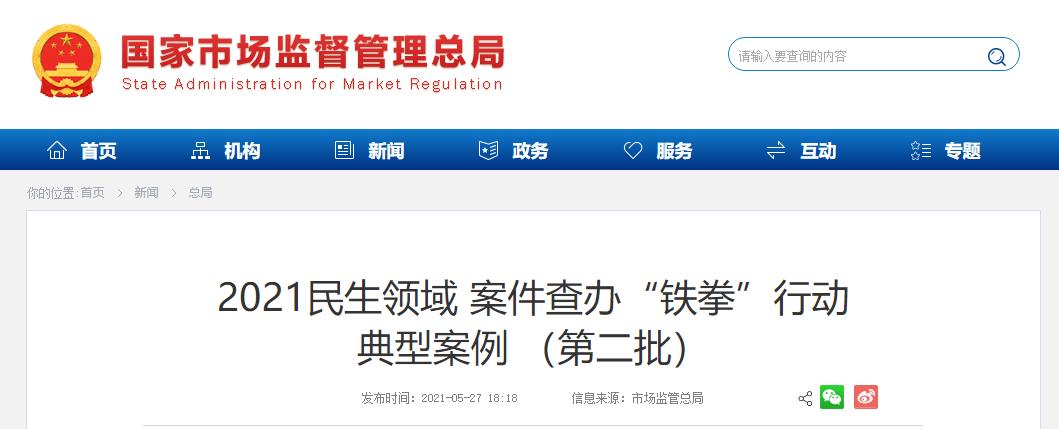
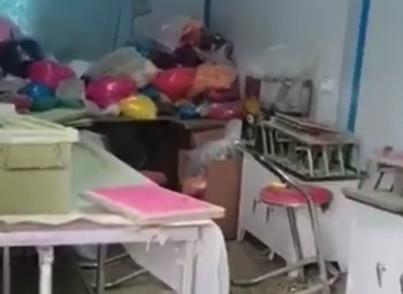


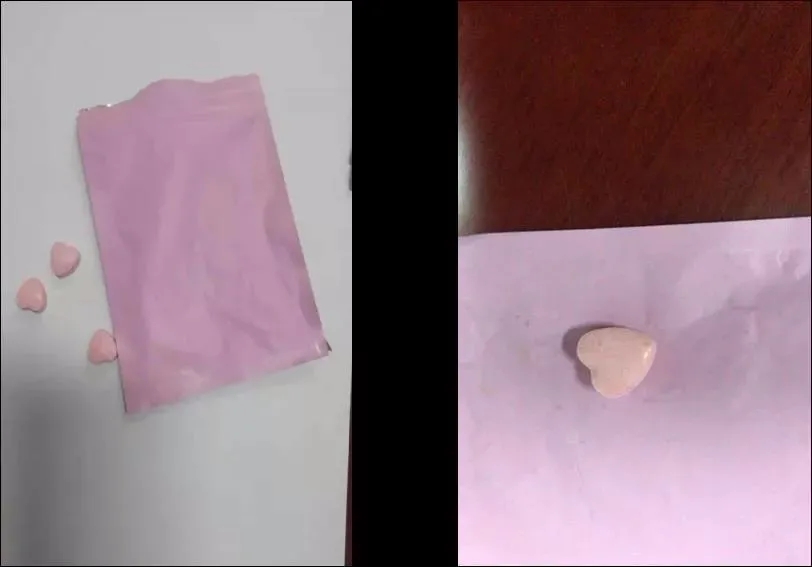
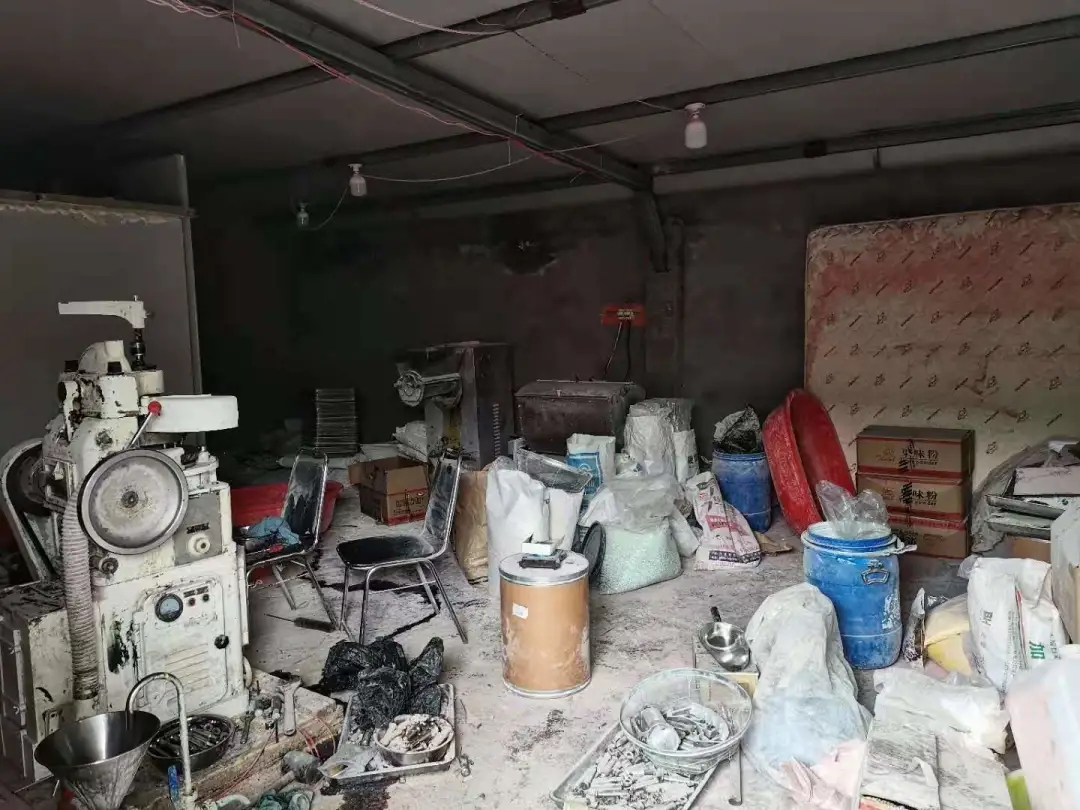






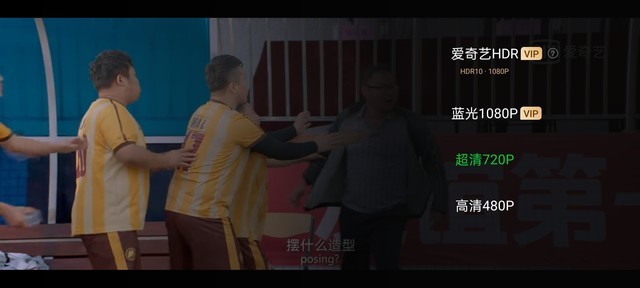 Iqiyi online
Iqiyi online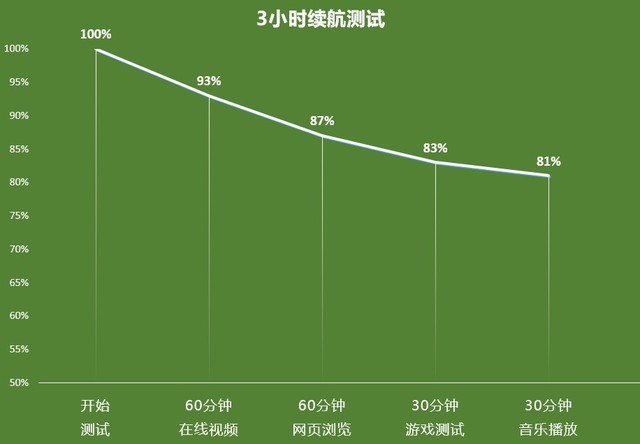 3-hour endurance test
3-hour endurance test 30-minute charging test
30-minute charging test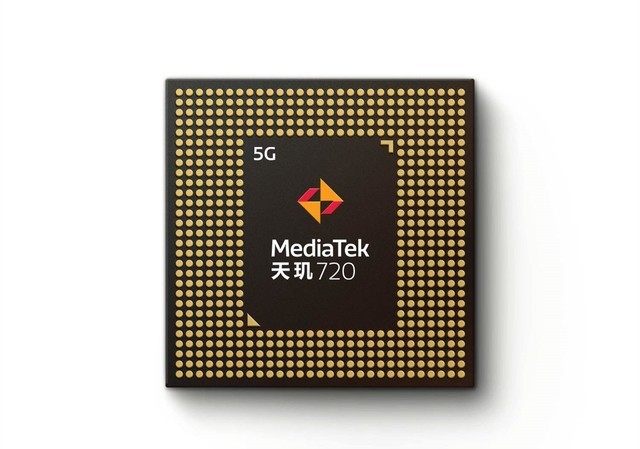 MediaTek Tianji 720
MediaTek Tianji 720 The glory of the king screen settings
The glory of the king screen settings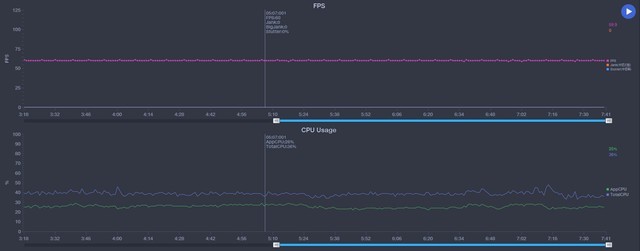 PerfDog game frame rate data
PerfDog game frame rate data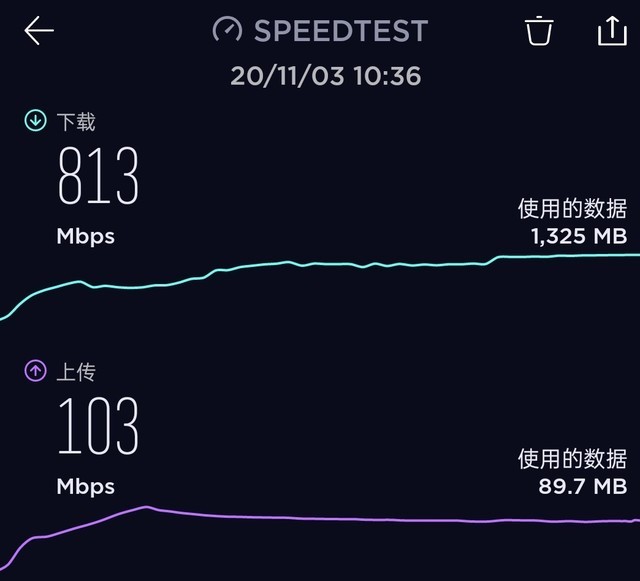 Speedtest 5G rate data
Speedtest 5G rate data
 Rear 48 million ultra-clear four photos
Rear 48 million ultra-clear four photos
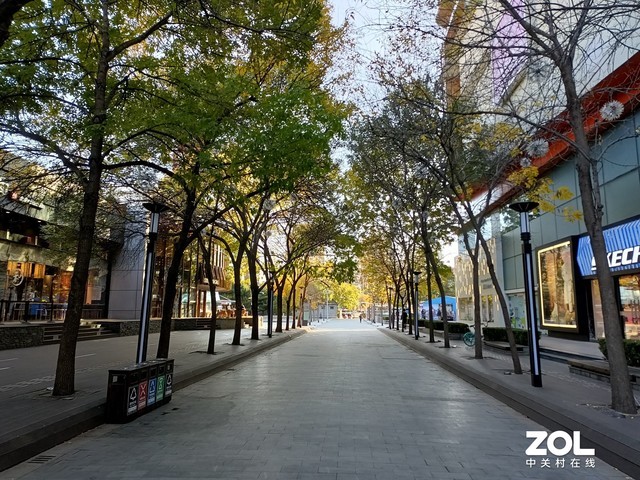
 OPPO K7x main camera 48 million pixel proofs
OPPO K7x main camera 48 million pixel proofs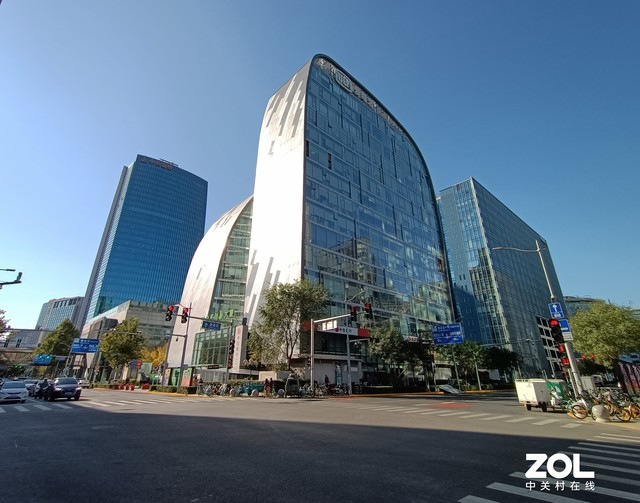 OPPO K7x ultra wide-angle proofs
OPPO K7x ultra wide-angle proofs OPPO K7x night view proofs
OPPO K7x night view proofs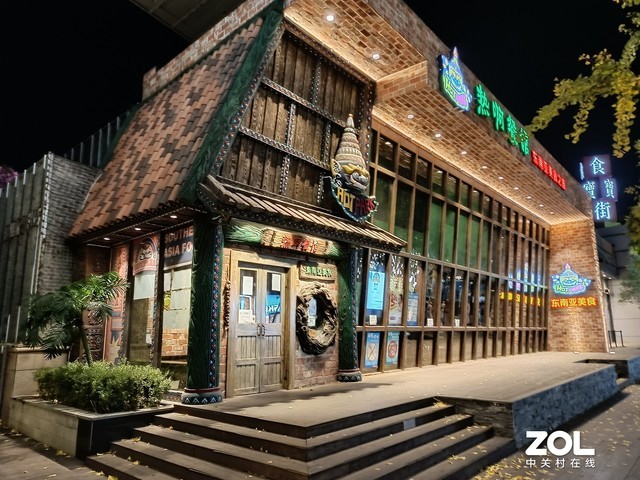 OPPO K7x night view proofs
OPPO K7x night view proofs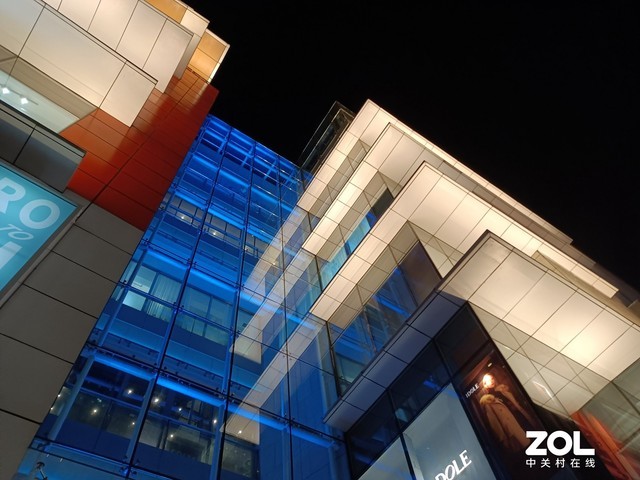 OPPO K7x night view proofs
OPPO K7x night view proofs ColorOS 7.2 UI design
ColorOS 7.2 UI design Artist Wallpaper wallpaper
Artist Wallpaper wallpaper